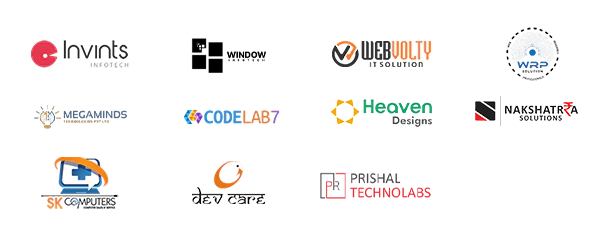Employee Management
Streamline the onboarding process for new employees.
Maintain comprehensive employee documentation.
Manage promotions and changes in employee roles.
Handle employee queries and inquiries efficiently.
Track and manage employee expenses and reimbursements.
Monitor the progress and status of ongoing projects.
Conduct exit interviews and manage employee departures effectively.
Enhance Workforce Management with Screen Capturing
Evaluate performance of employee.
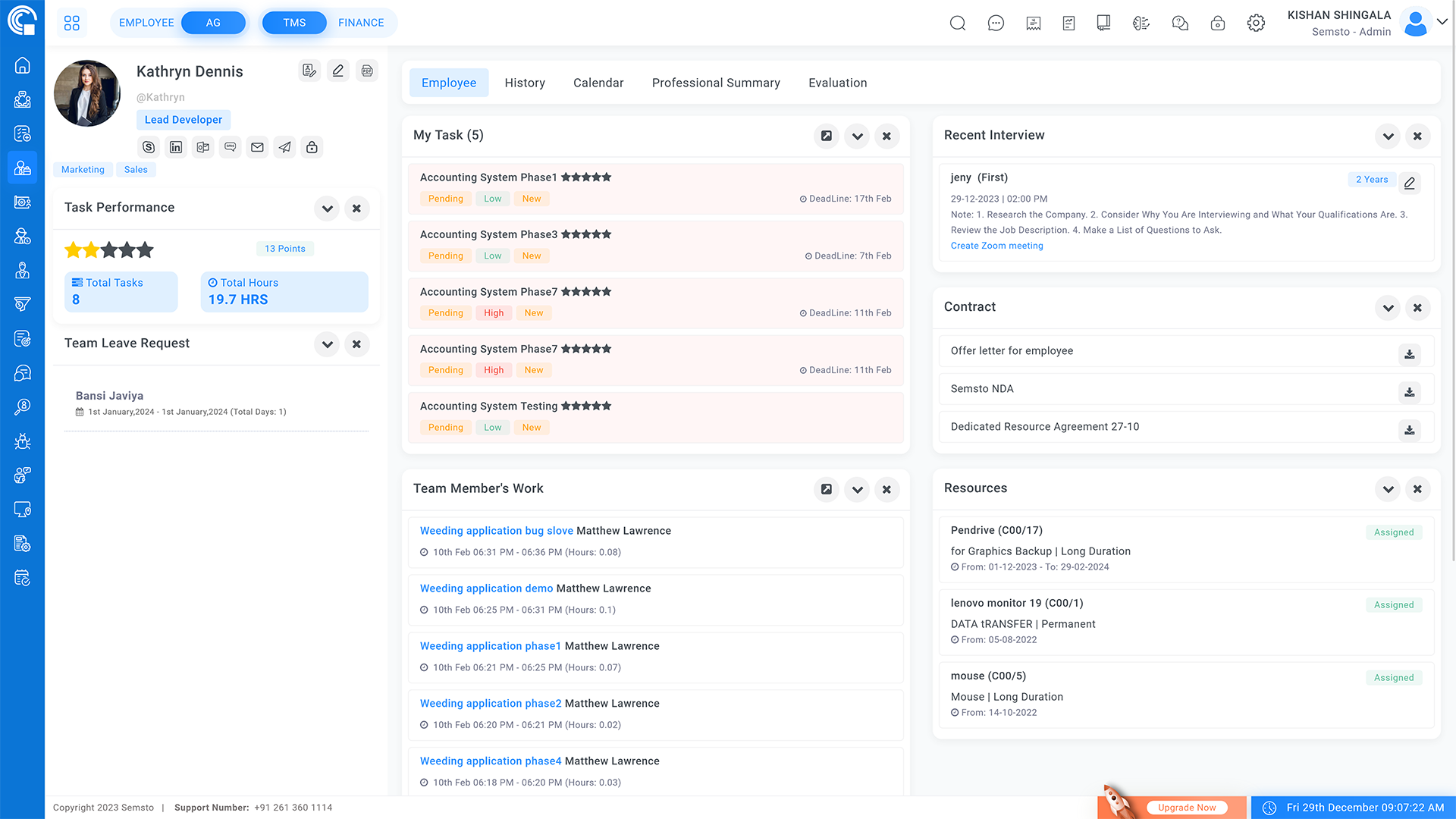
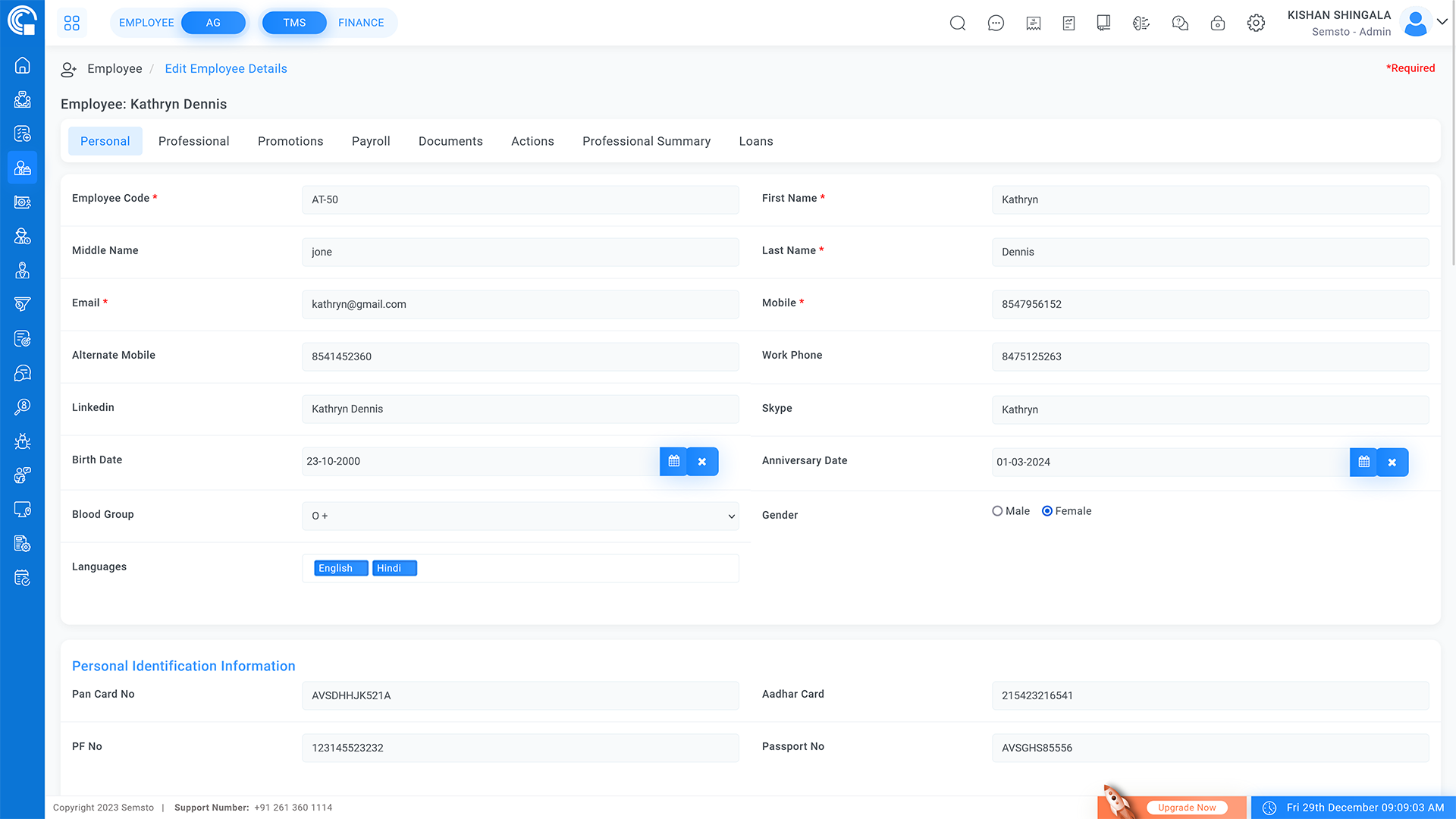
Implement a robust system to securely store and manage all employee-related information, ensuring accuracy and accessibility when needed.
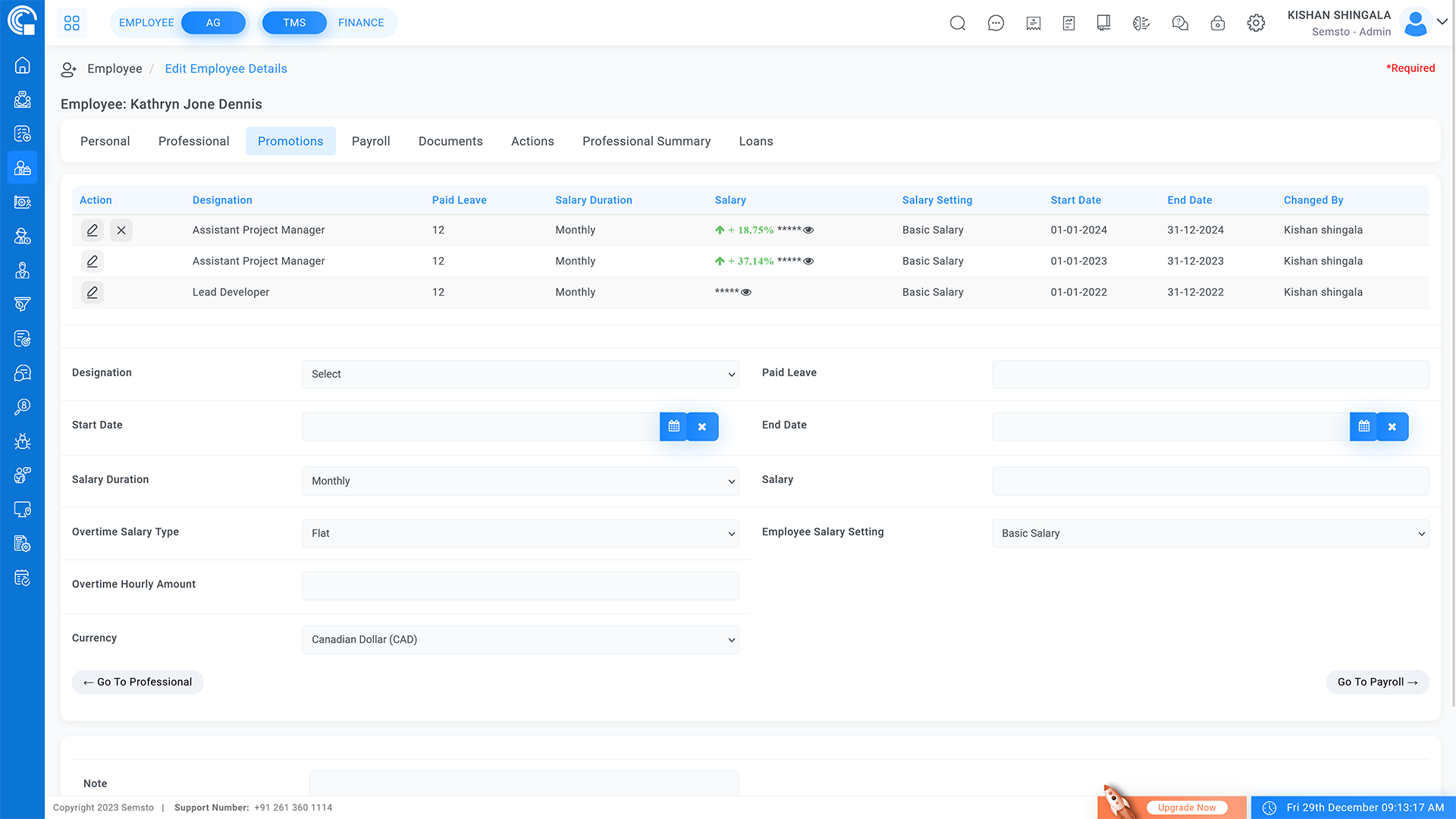
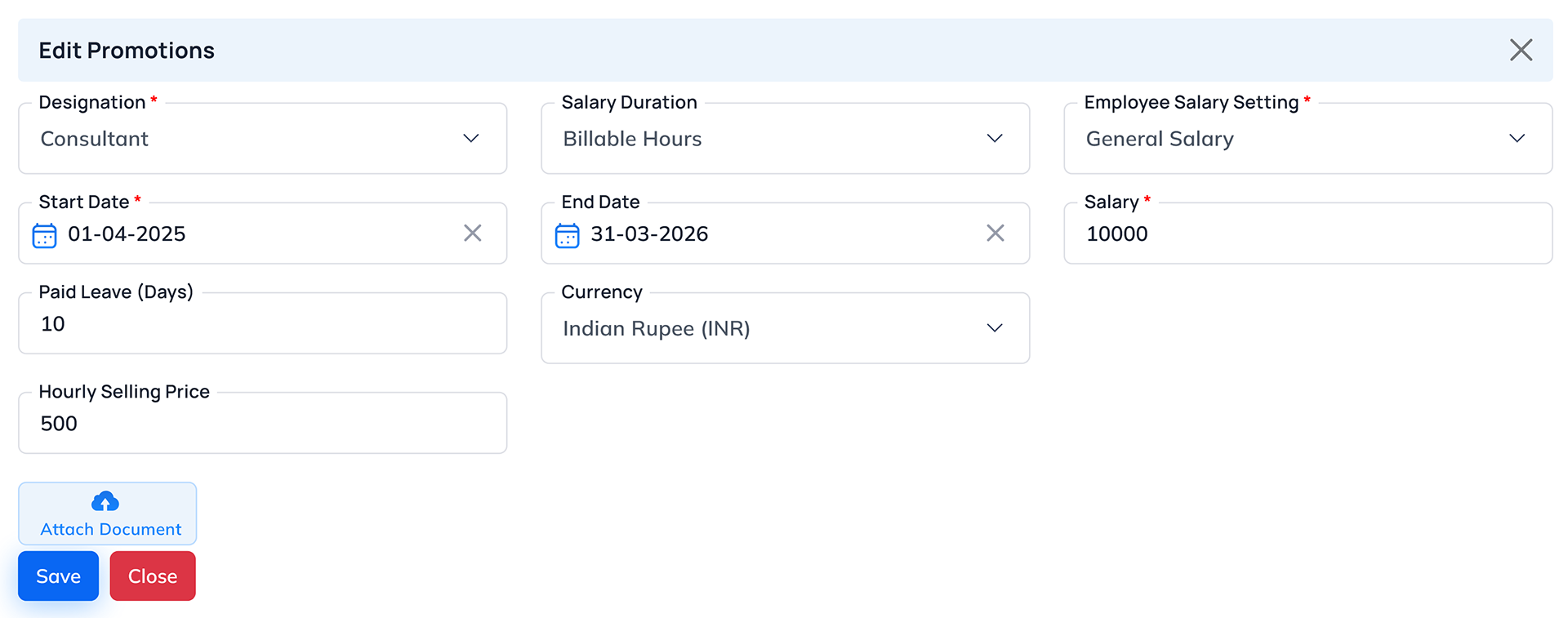
Introduce a feature to alert management about upcoming employee promotions, ensuring timely recognition and career progression within the organization.
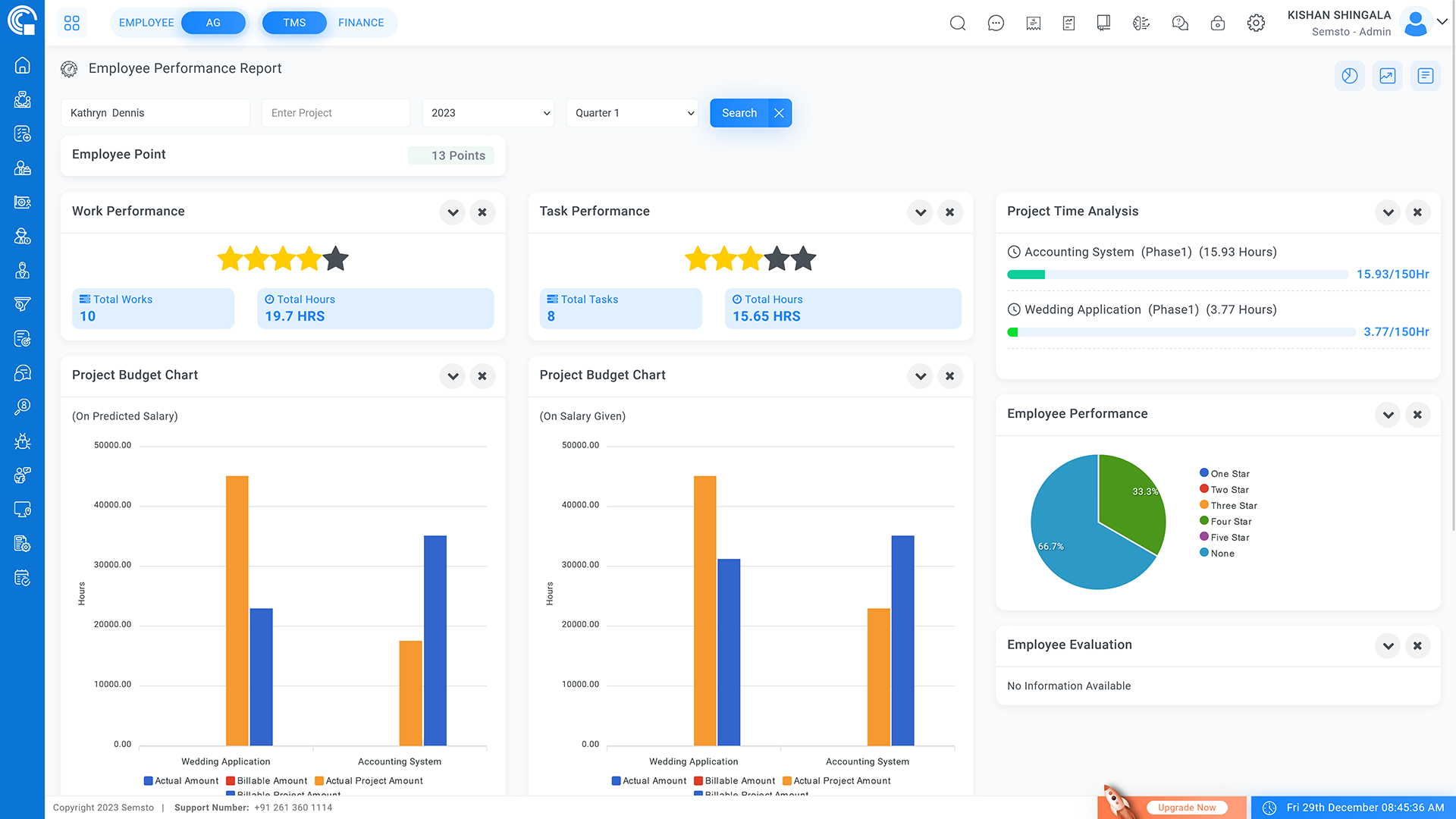
Implement a system to monitor all tasks and activities performed by employees, leading to enhanced productivity and more informed management decisions.
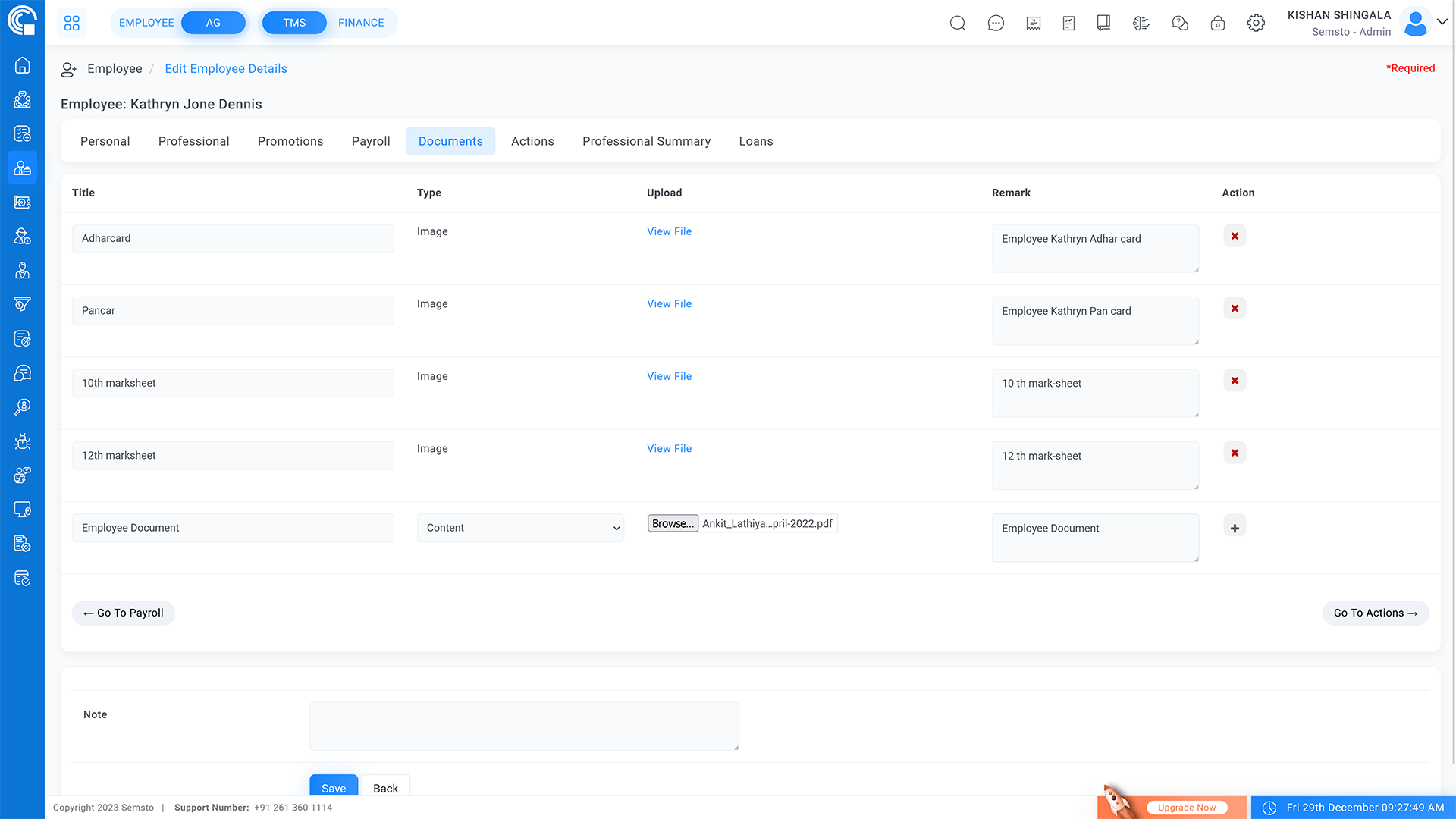
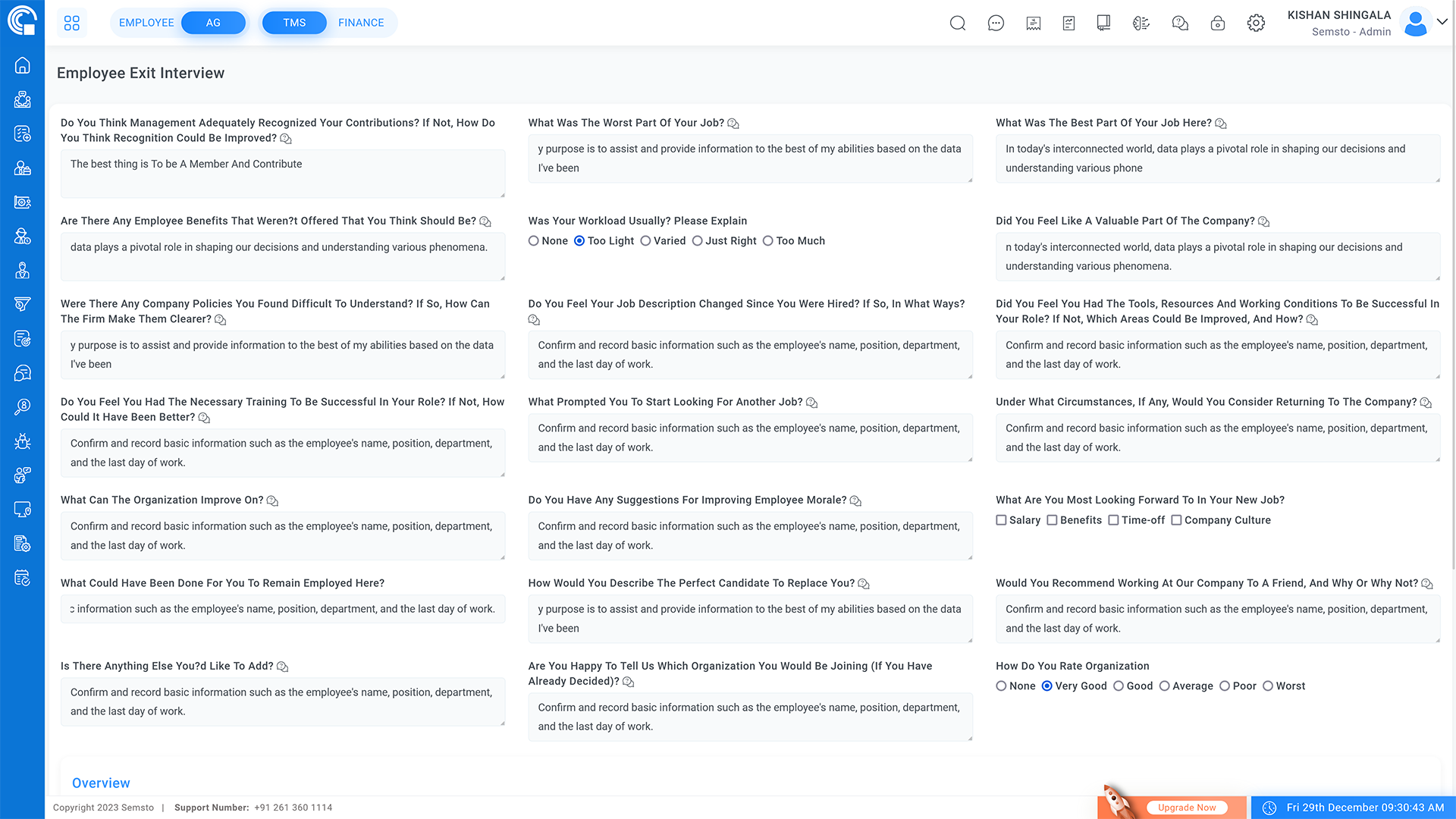
Develop a comprehensive set of exit interview questions to gather valuable feedback from departing employees, aiding in organizational improvement and employee retention strategies.
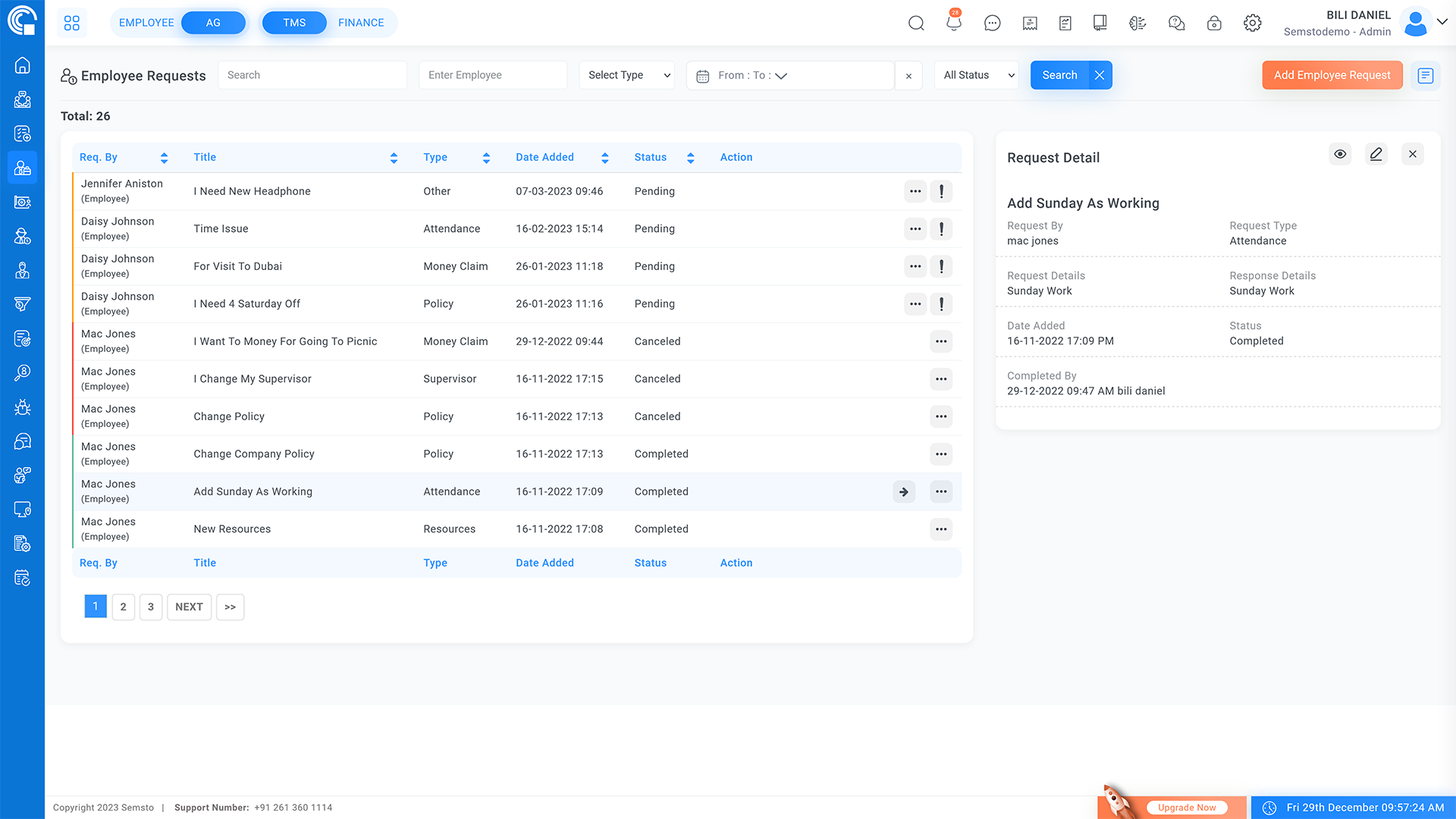
Enable employees to submit queries through an online portal, directing these requests to the relevant department. Also, provide a feature for employees to track the status of their submitted queries, ensuring transparency and efficiency in query resolution.
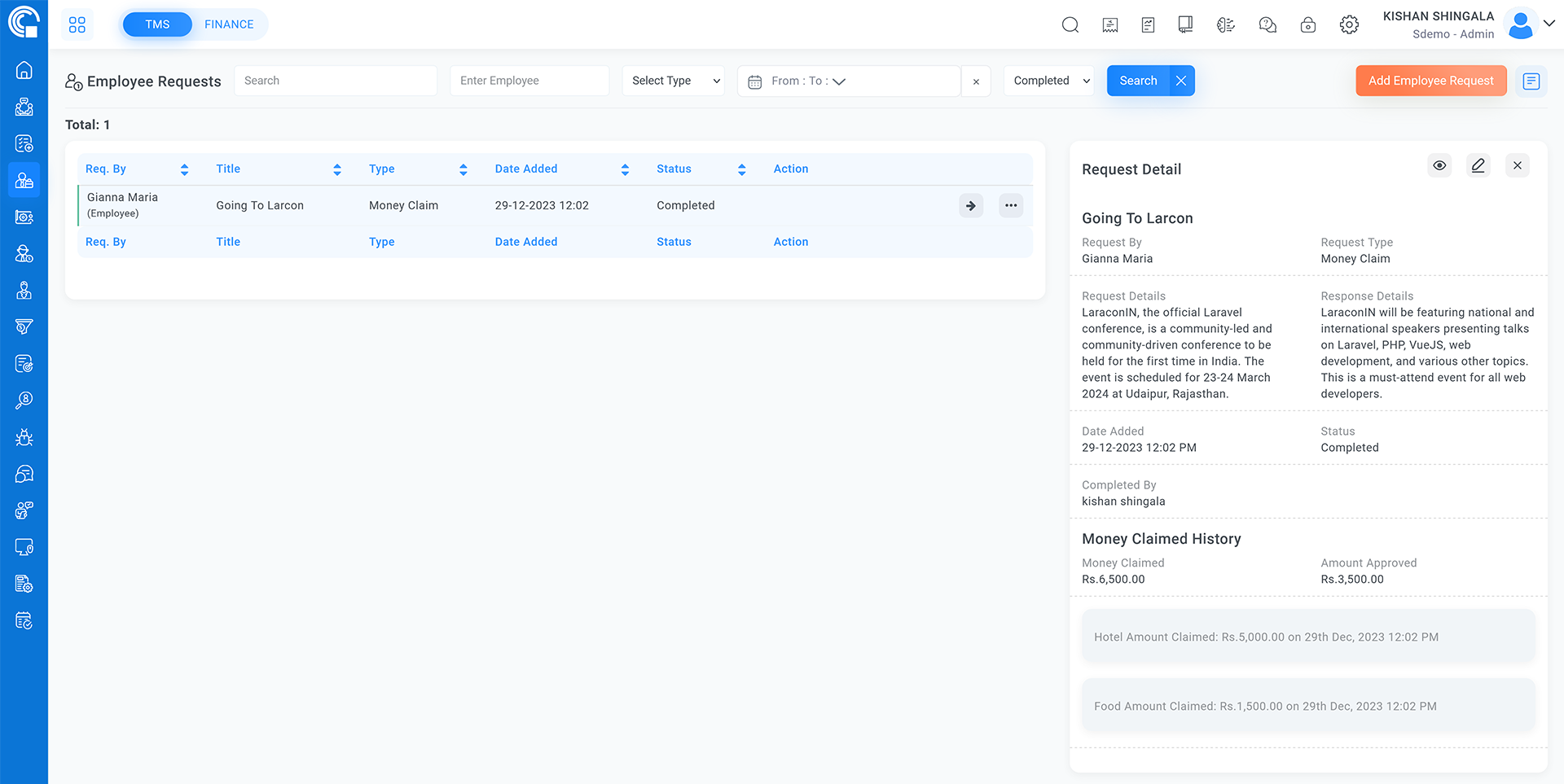
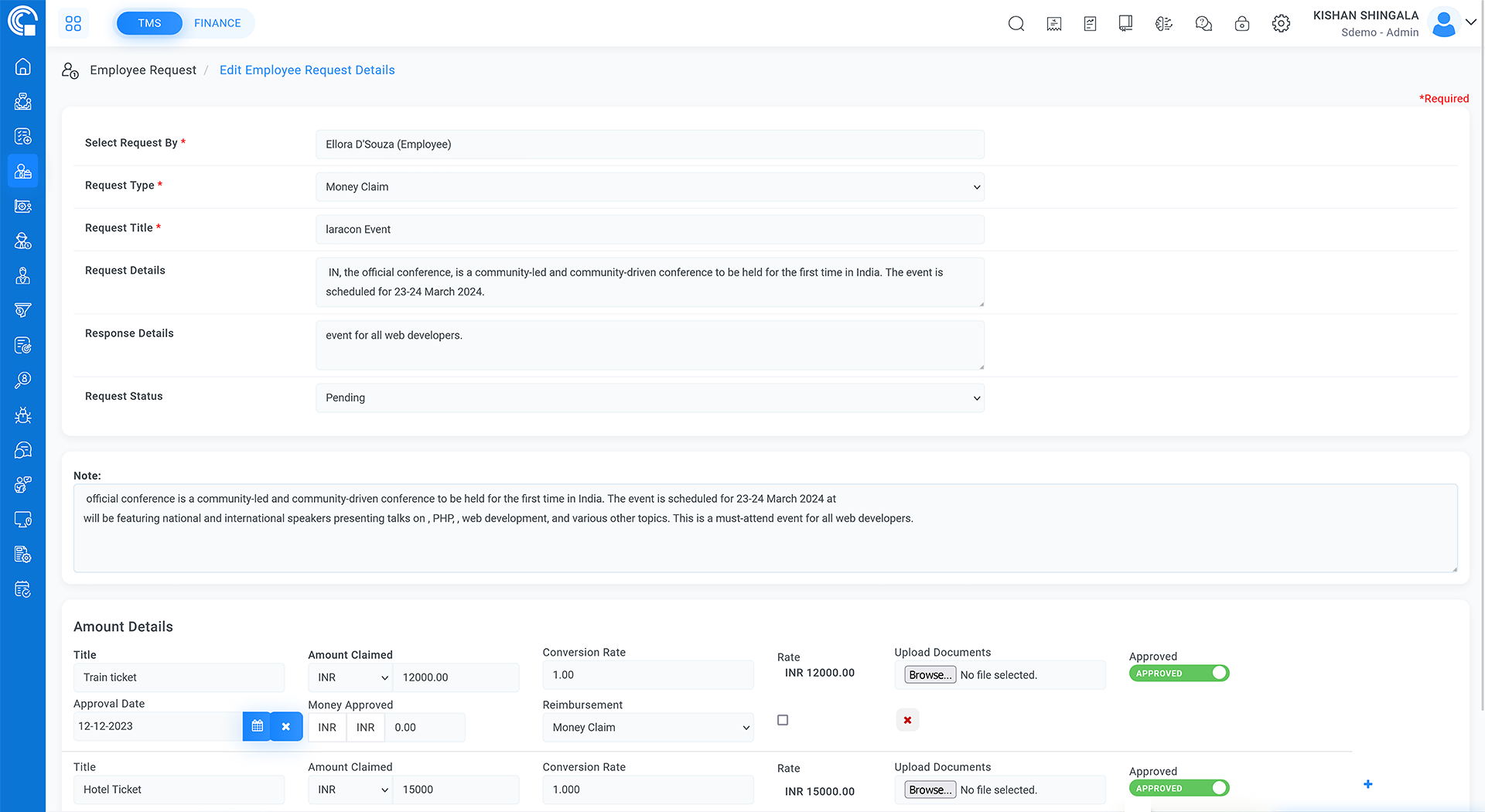
Implement a clear and efficient system to monitor expenses during office tours, facilitate online claim submissions and allow tracking of claim status and approvals, ensuring transparency and ease in the reimbursement process.
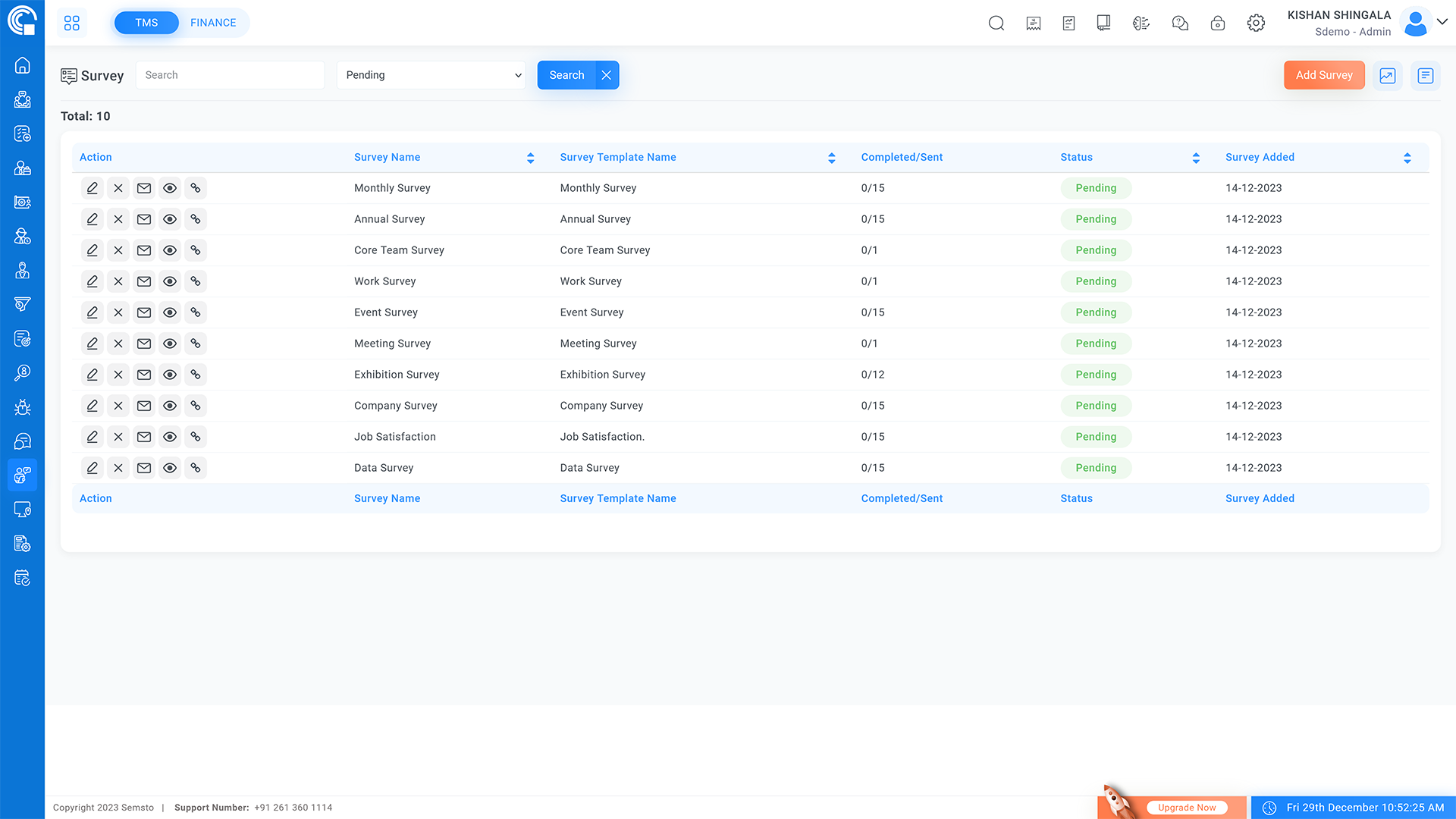
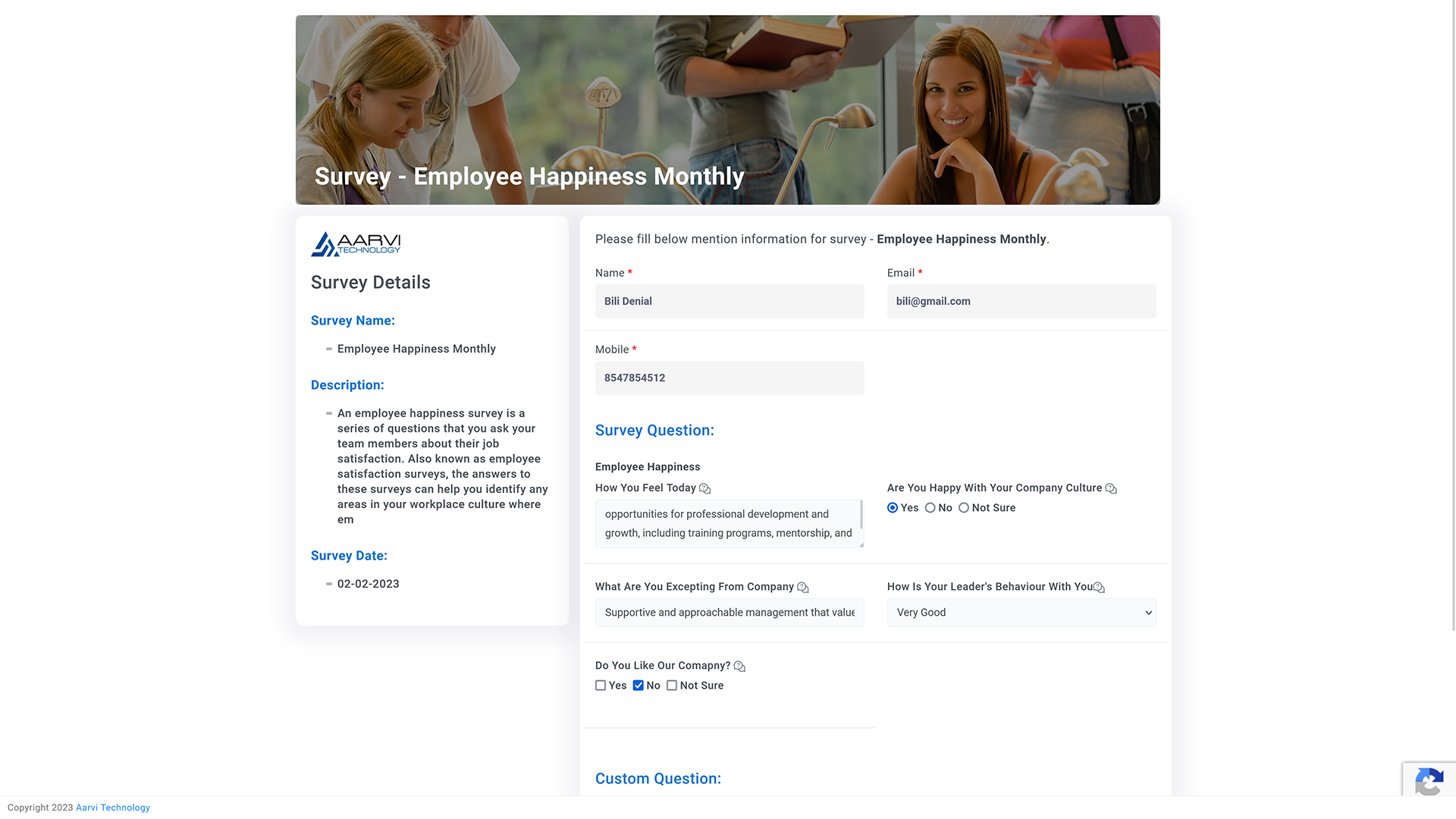
Regularly schedule and conduct surveys among team members, utilizing the insights gained from these surveys to inform and guide organizational decision-making processes.
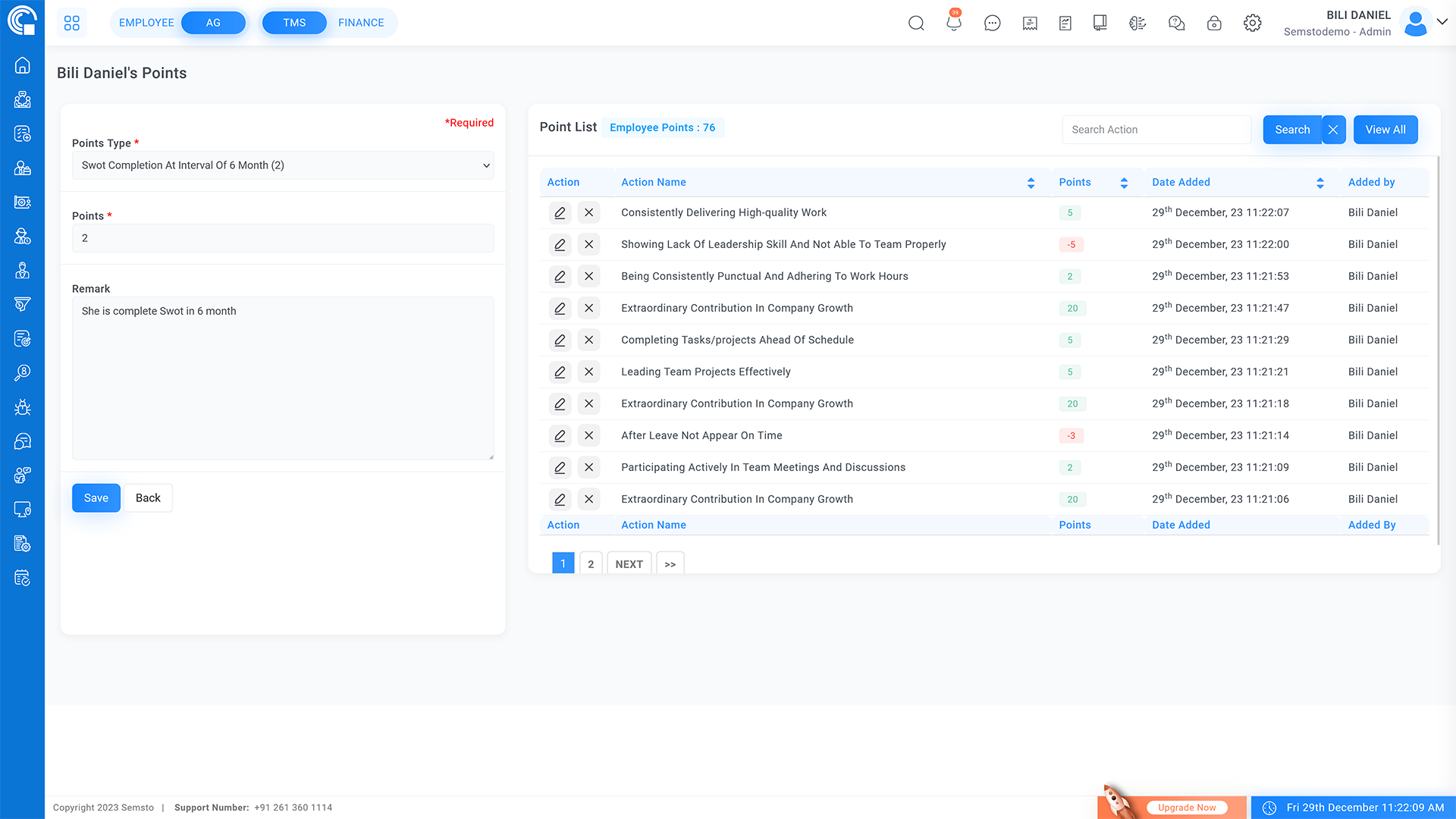
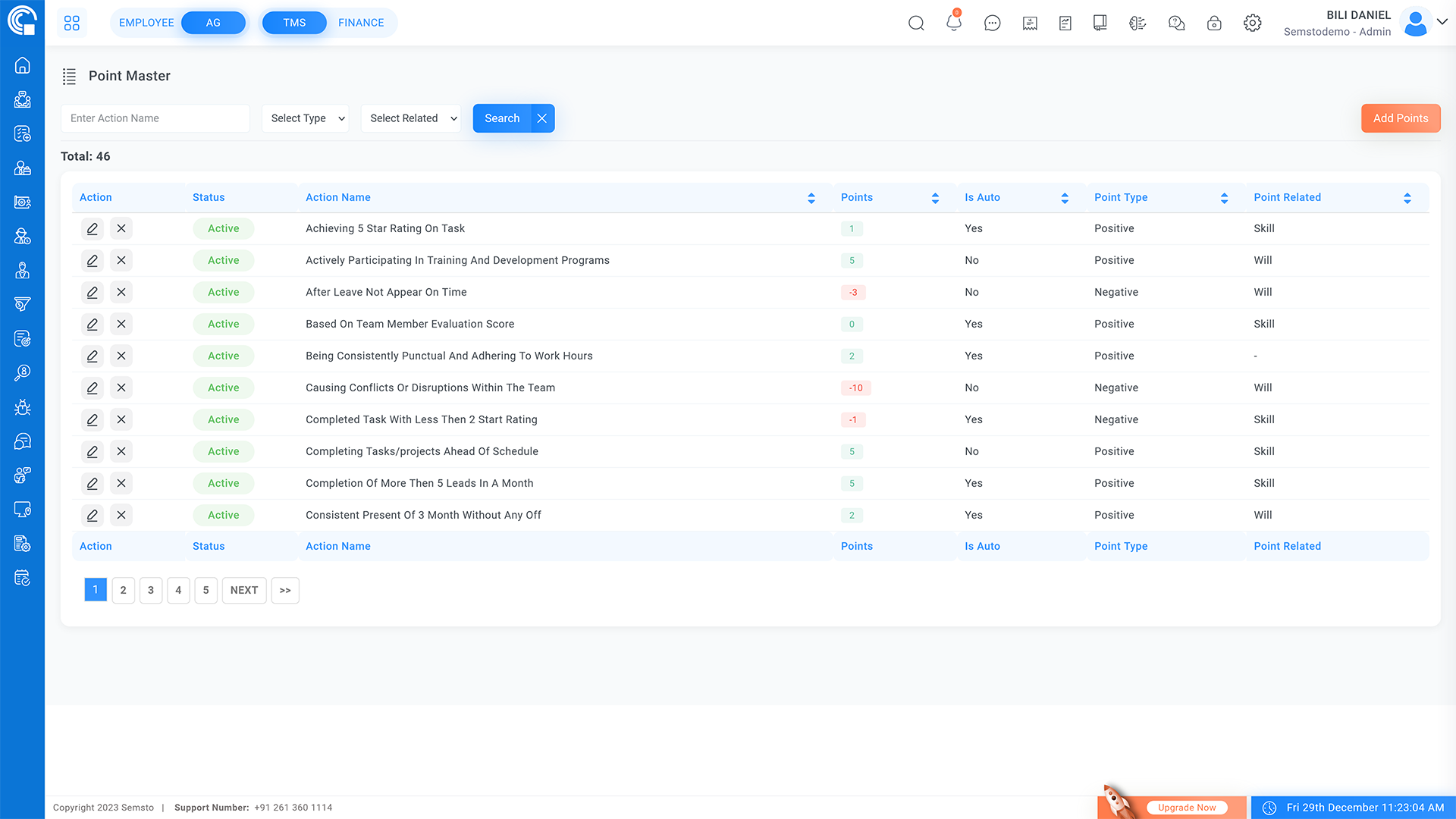
Establish a dual system, incorporating both automated and manual point evaluation based on specific criteria, to provide a balanced and thorough assessment of employee performance.
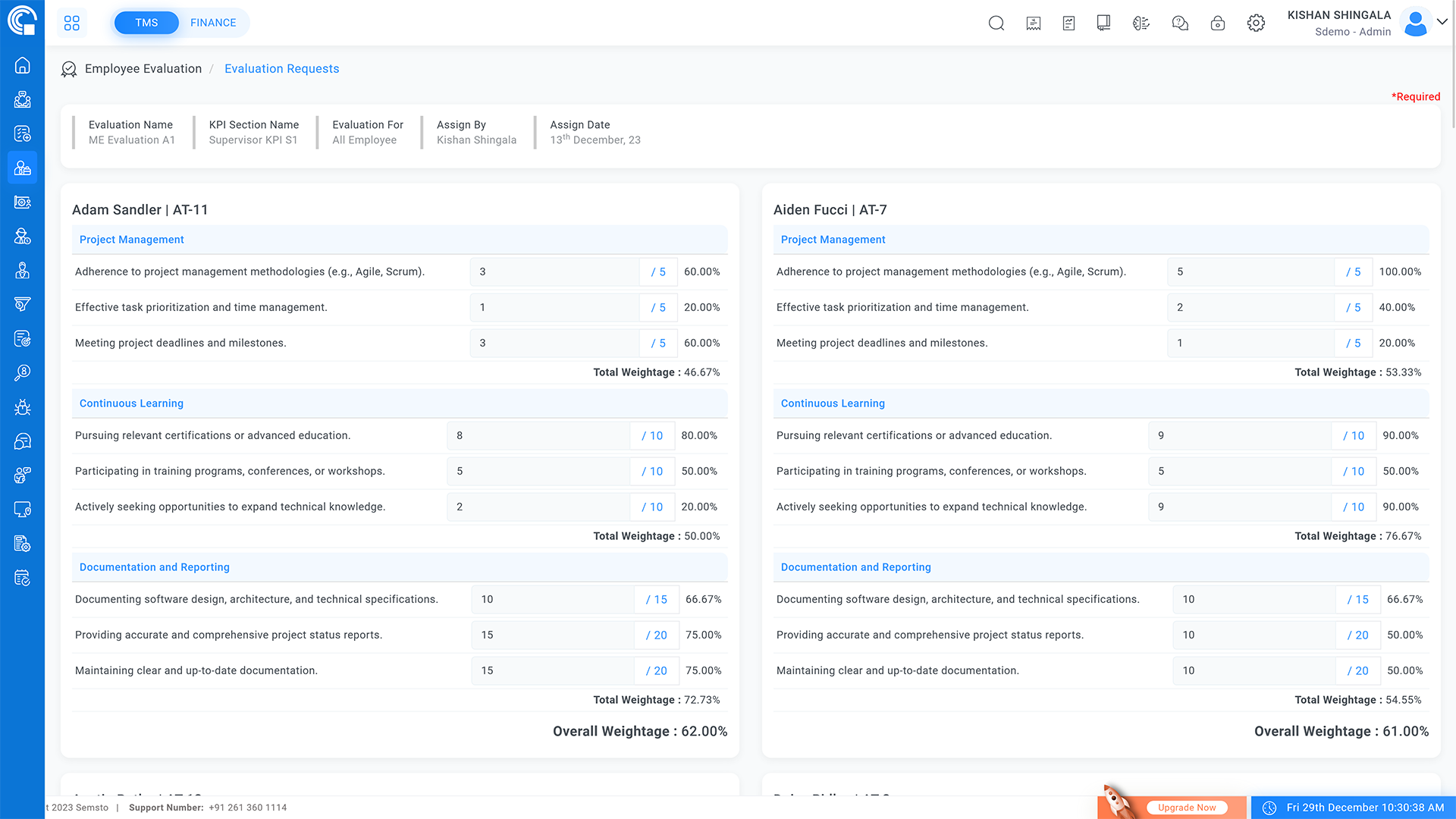
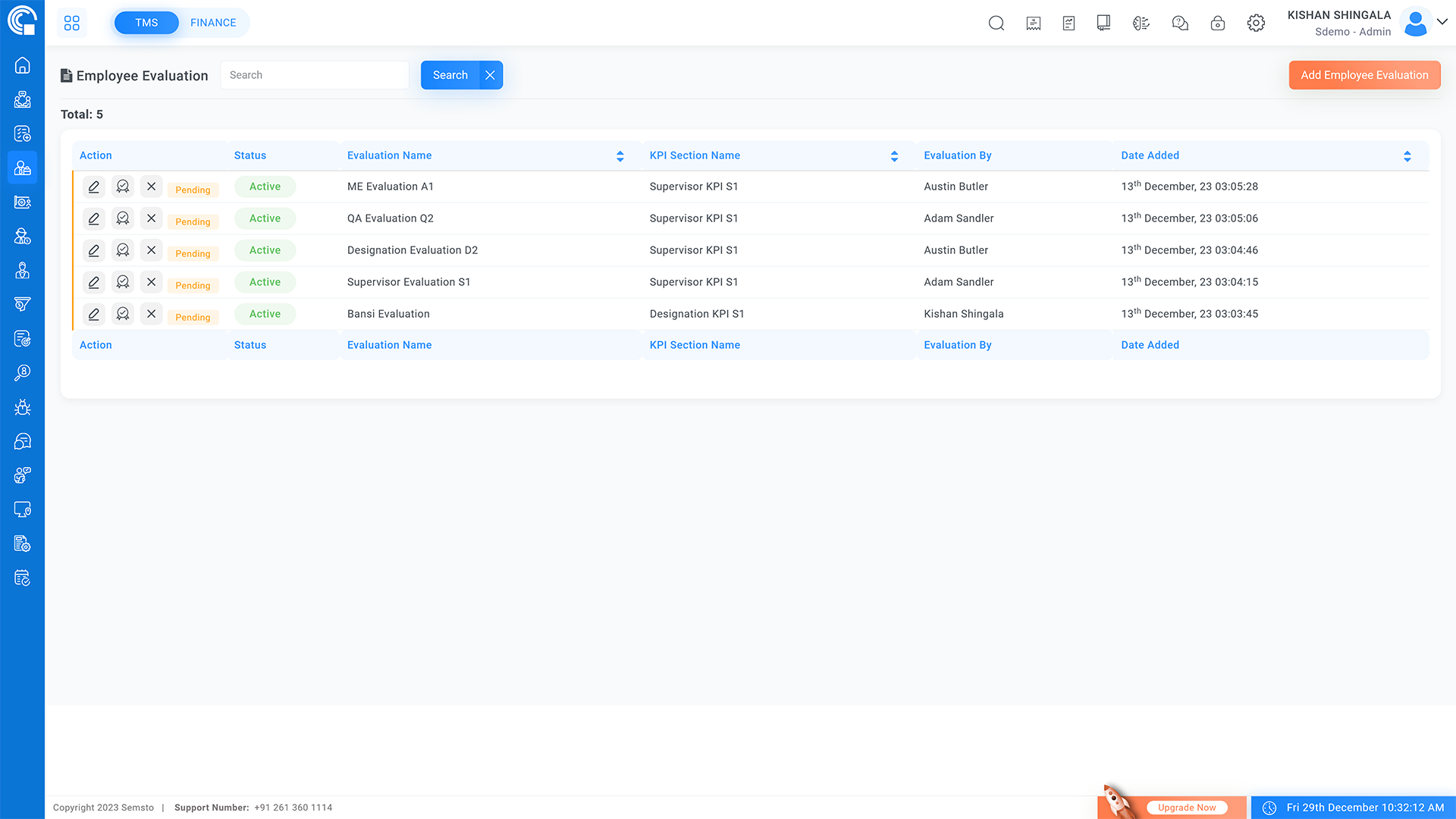
Allows administrators to set up custom evaluation rules, points and weightages, enabling them to schedule and track evaluations between team members and leaders, thus facilitating comprehensive performance measurement of team members.
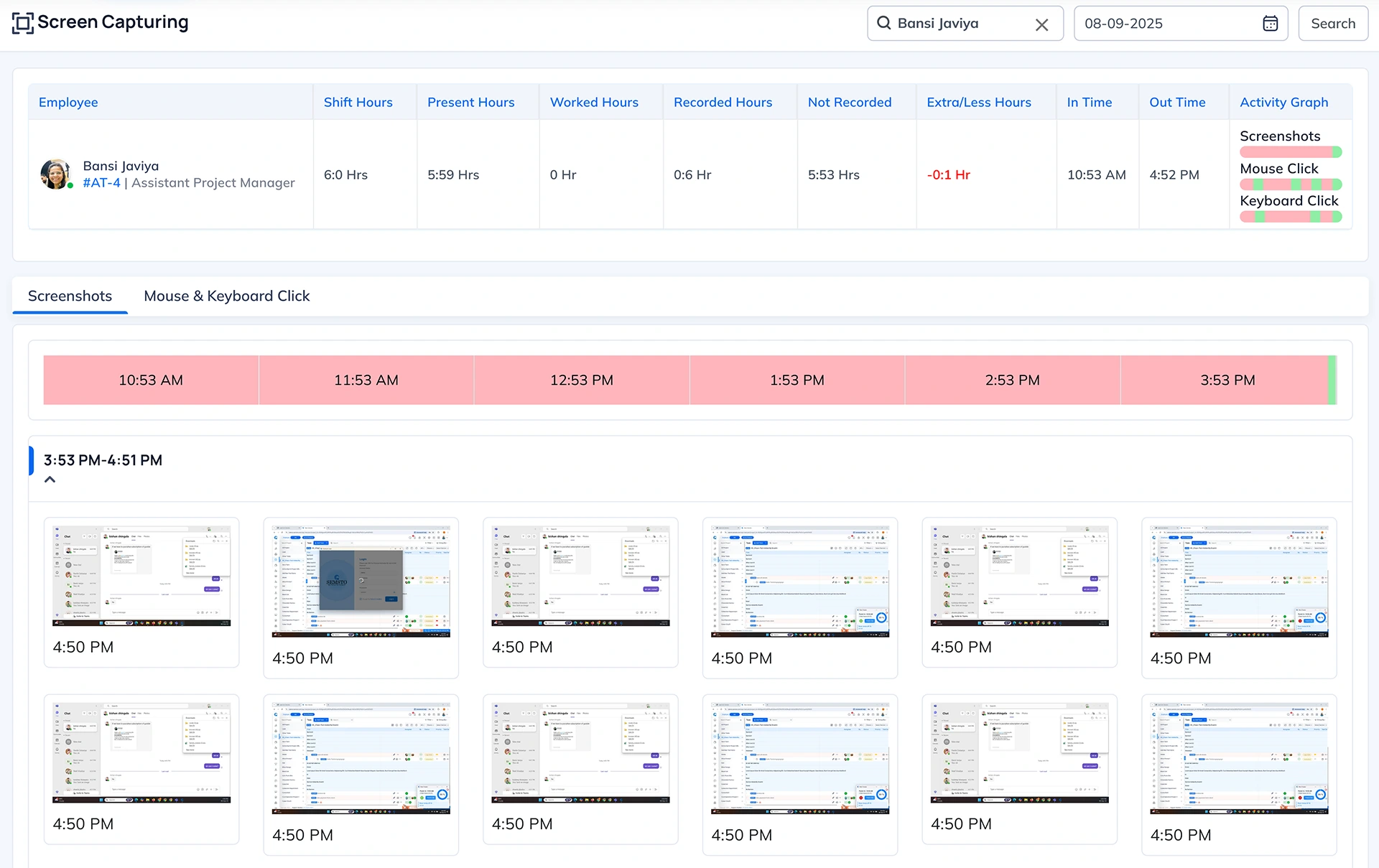
Utilizing screen capture technology provides clients with enhanced oversight of employee activities, leading to increased productivity and more effective management of remote or in-office teams.
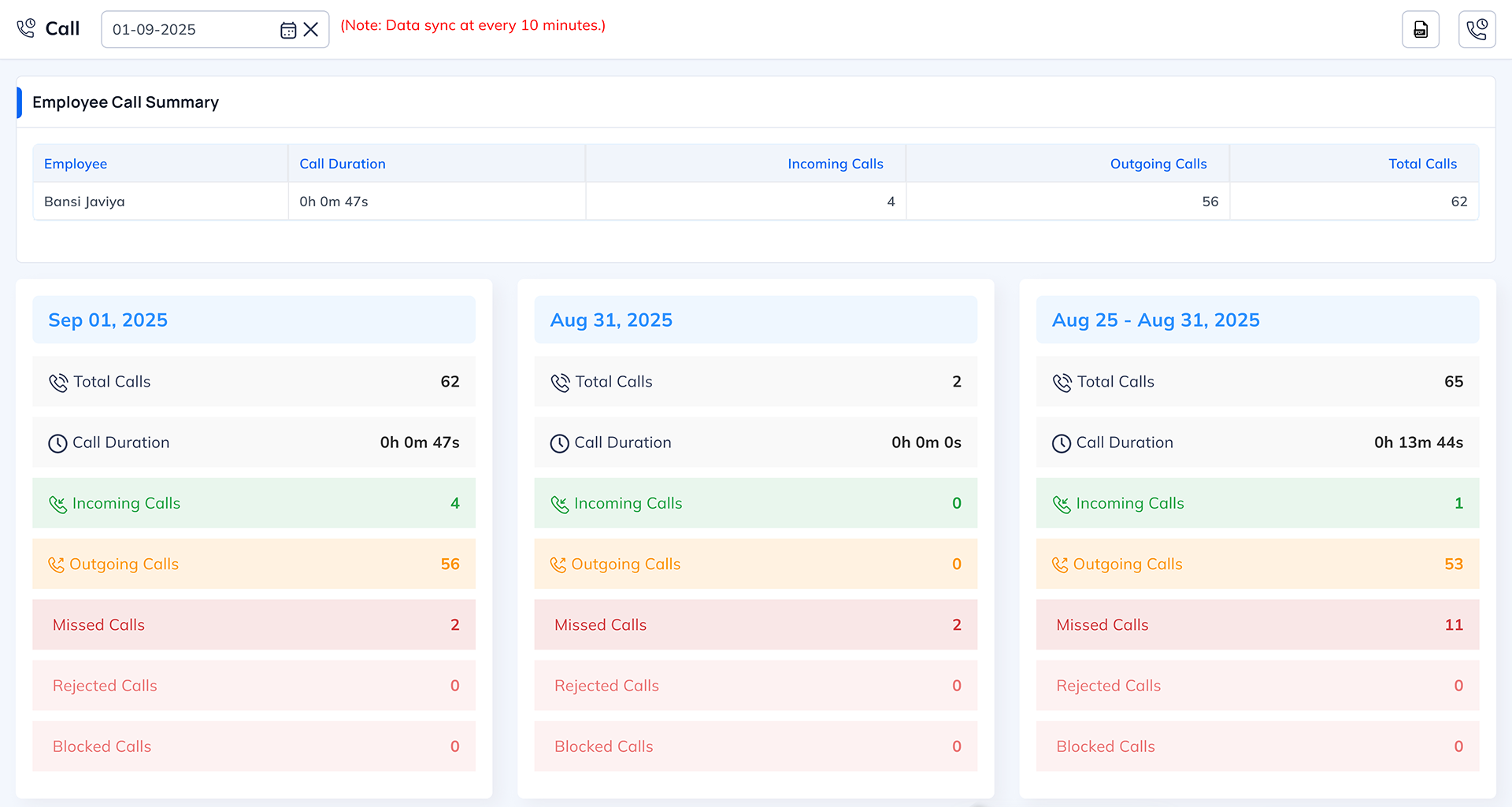
Monitor telecaller performance by tracking all attended, outgoing and missed calls, along with the total time spent engaging with clients.
Capabilities
Store Employee Information
Personal Information:
Record details including name, date of birth and identification numbers.
Contact Details:
Store phone numbers, email addresses and other contact information.
Address Information:
Maintain current and permanent residential addresses.
Dependent Data:
Keep records of employee dependents, including names and relationships.
Emergency Contacts:
List emergency contact names, relationships and contact numbers.
Professional Profile:
Document job titles, skills and experience.
Interests:
Note any hobbies or interests relevant to the workplace.
Employment History:
Compile previous employment details, roles and durations.
Educational Background:
Record academic qualifications and institutions attended.
Certification Records:
Keep track of professional certifications and expiration dates.
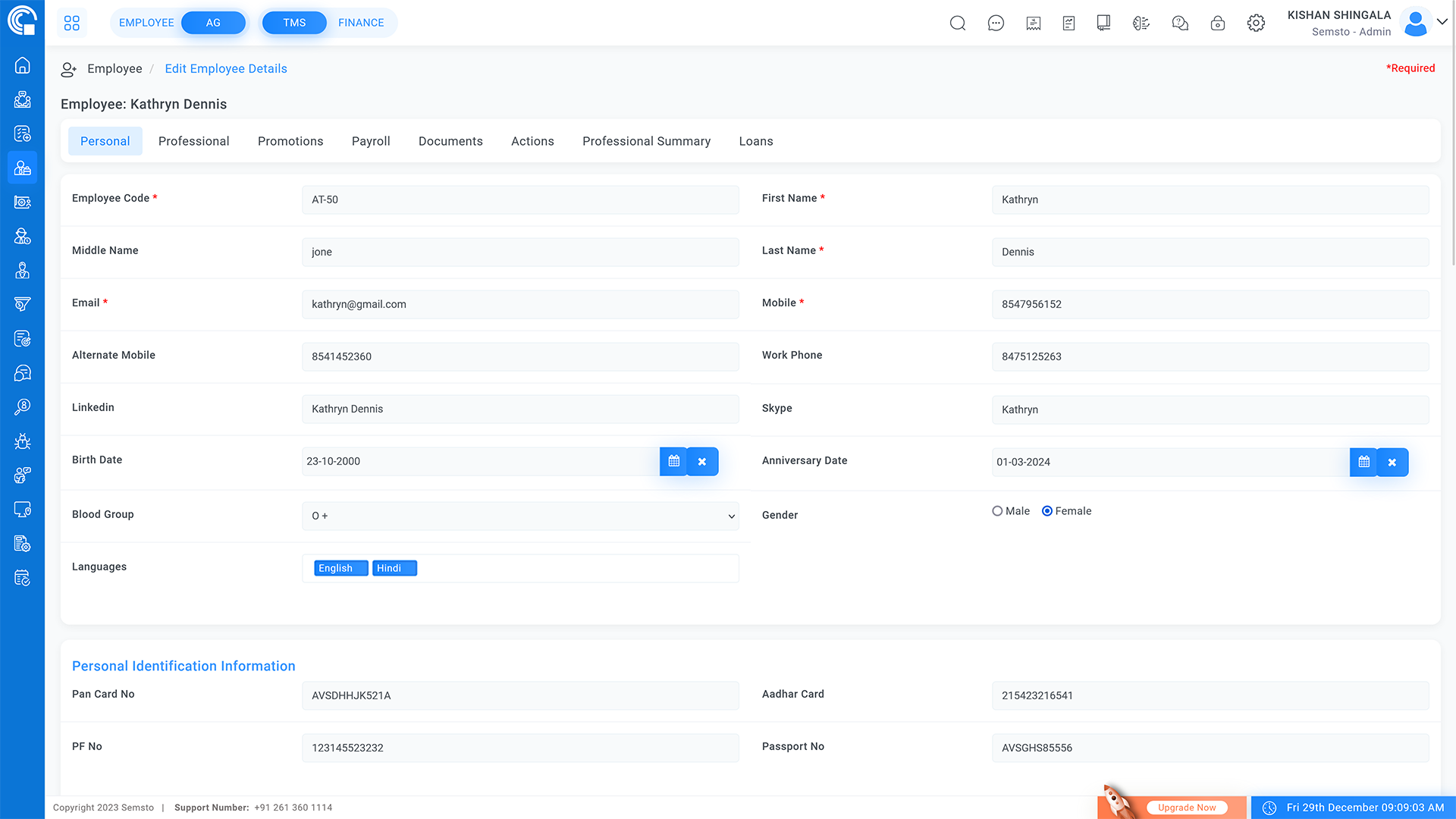
Manage Promotions
Maintain a record of all promotions carried out in our company.
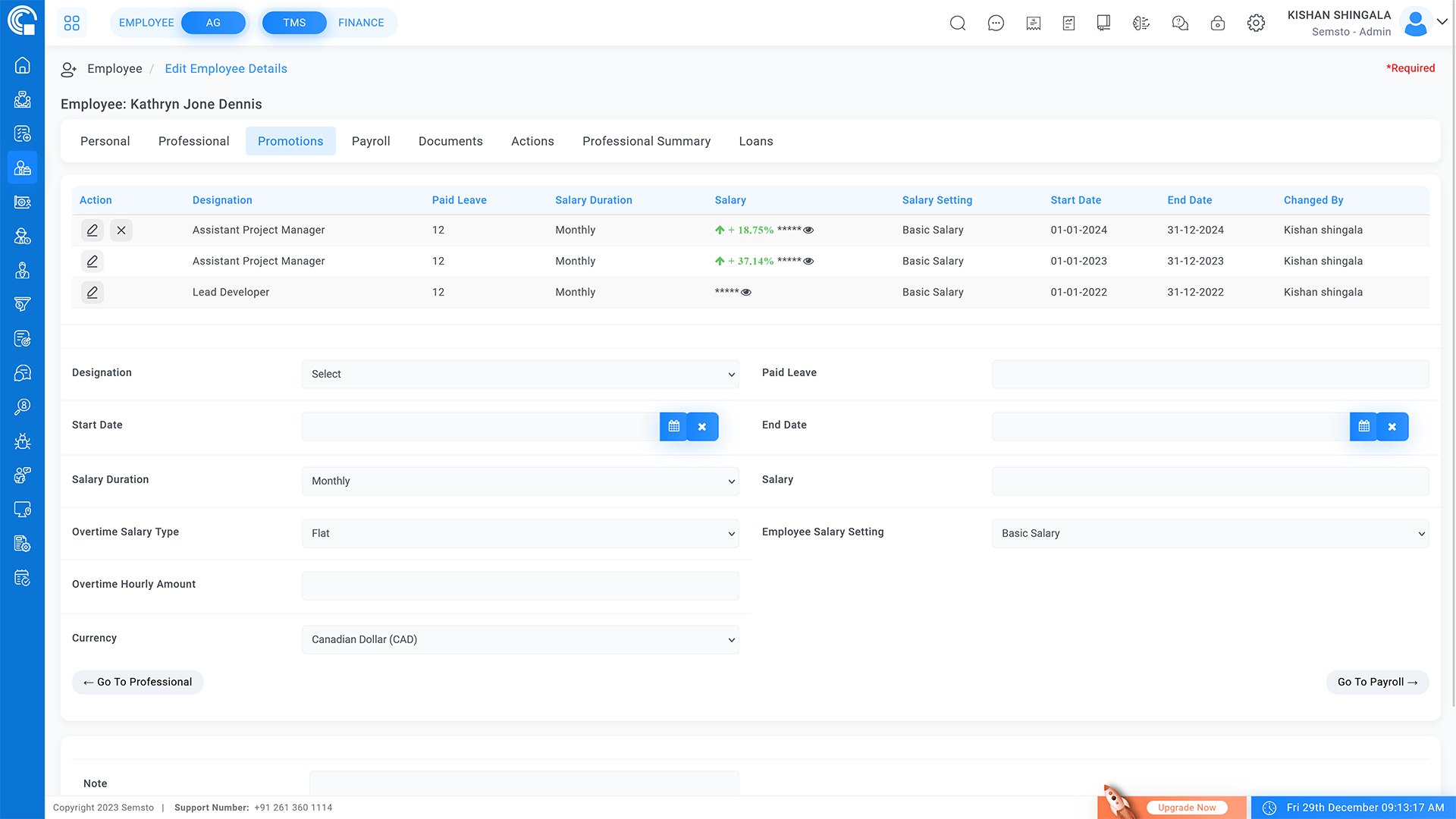
Manage Documents
Transition to digital document storage.
Eliminate the need for paper documents.
Streamline storage and access.
Conserve physical space.
Facilitate easier document retrieval.
Enhance overall document management.
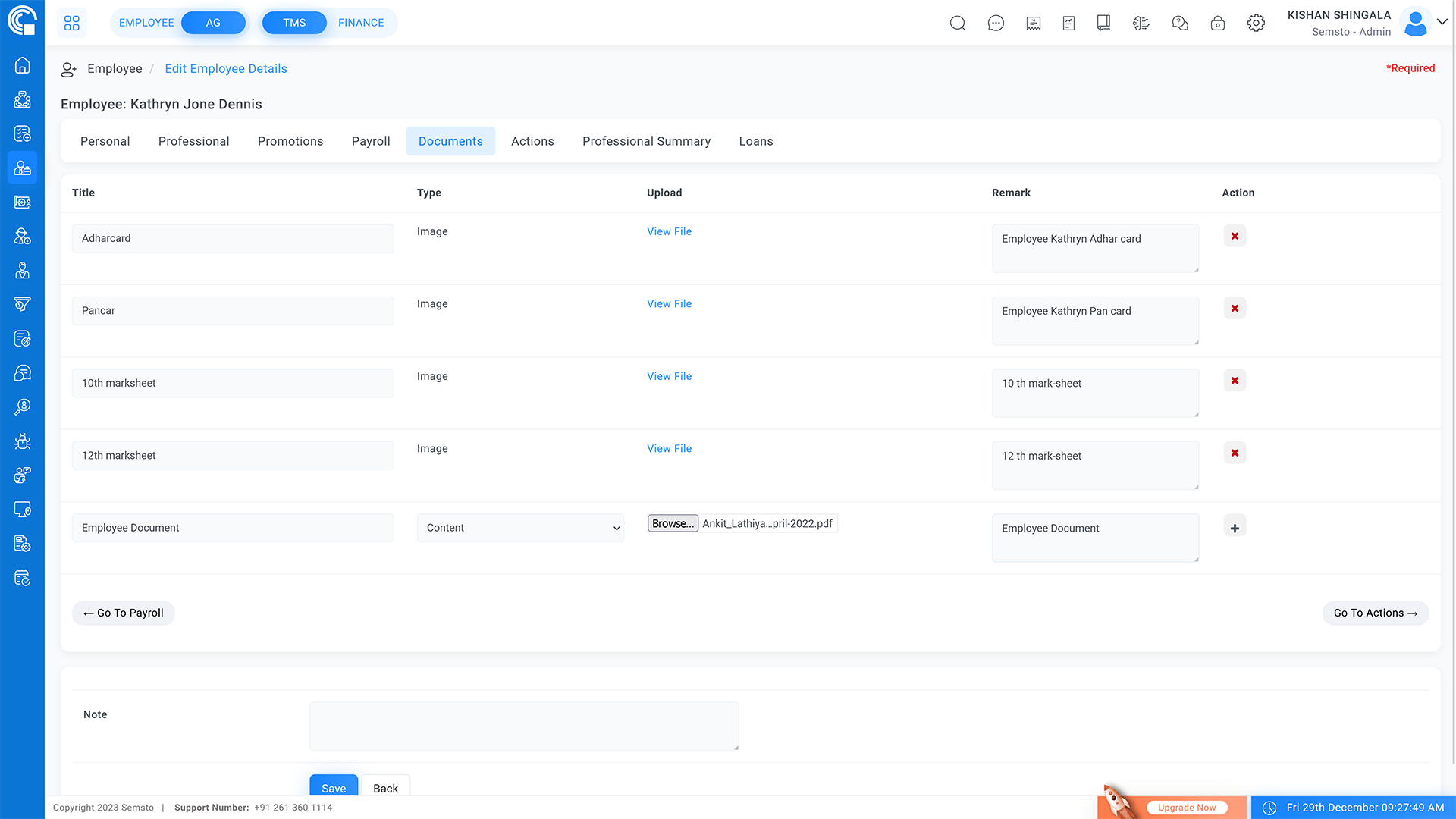
Employee Journey
To ensure a comprehensive and effective employee management strategy, our approach involves:
Defining action items:
Clearly specify tasks and objectives for each employee.
Tracking progress:
Monitor the completion and progress of these action items.
Stage-specific actions:
Tailor action items to different stages of an employee's journey within the company.
Continuous updating:
Regularly review and update action items as needed.
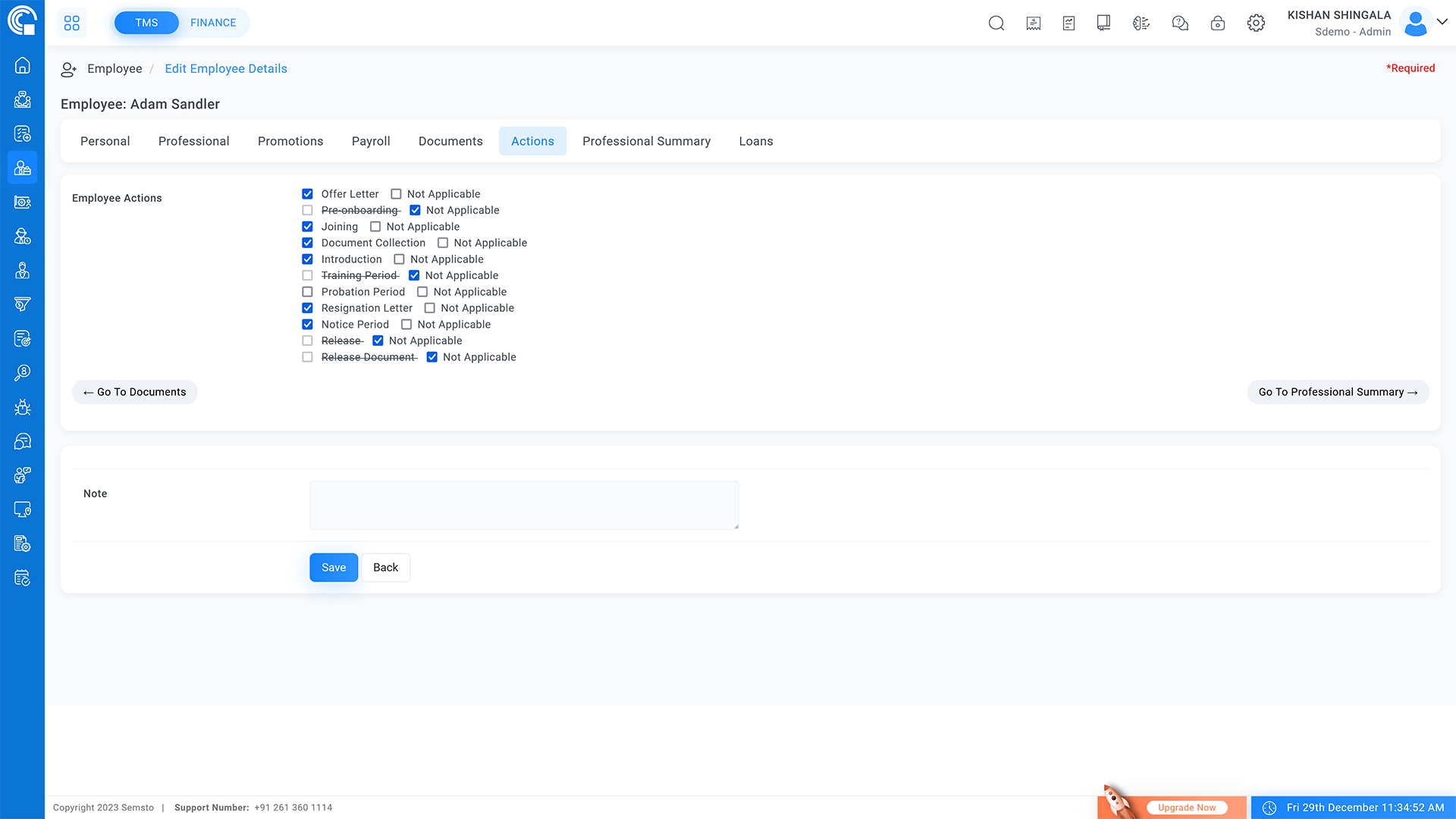
Professional Summary
Record Work History:
Document each employee's previous roles, responsibilities and achievements within the company.
Track Certifications and Courses:
Keep a record of all professional certifications, completed courses and ongoing training.
Note Interests:
Include information on each employee's professional interests and skills.
Create Work Profiles:
Generate comprehensive Work Profiles for each employee, incorporating the above details for resource sharing and collaboration.
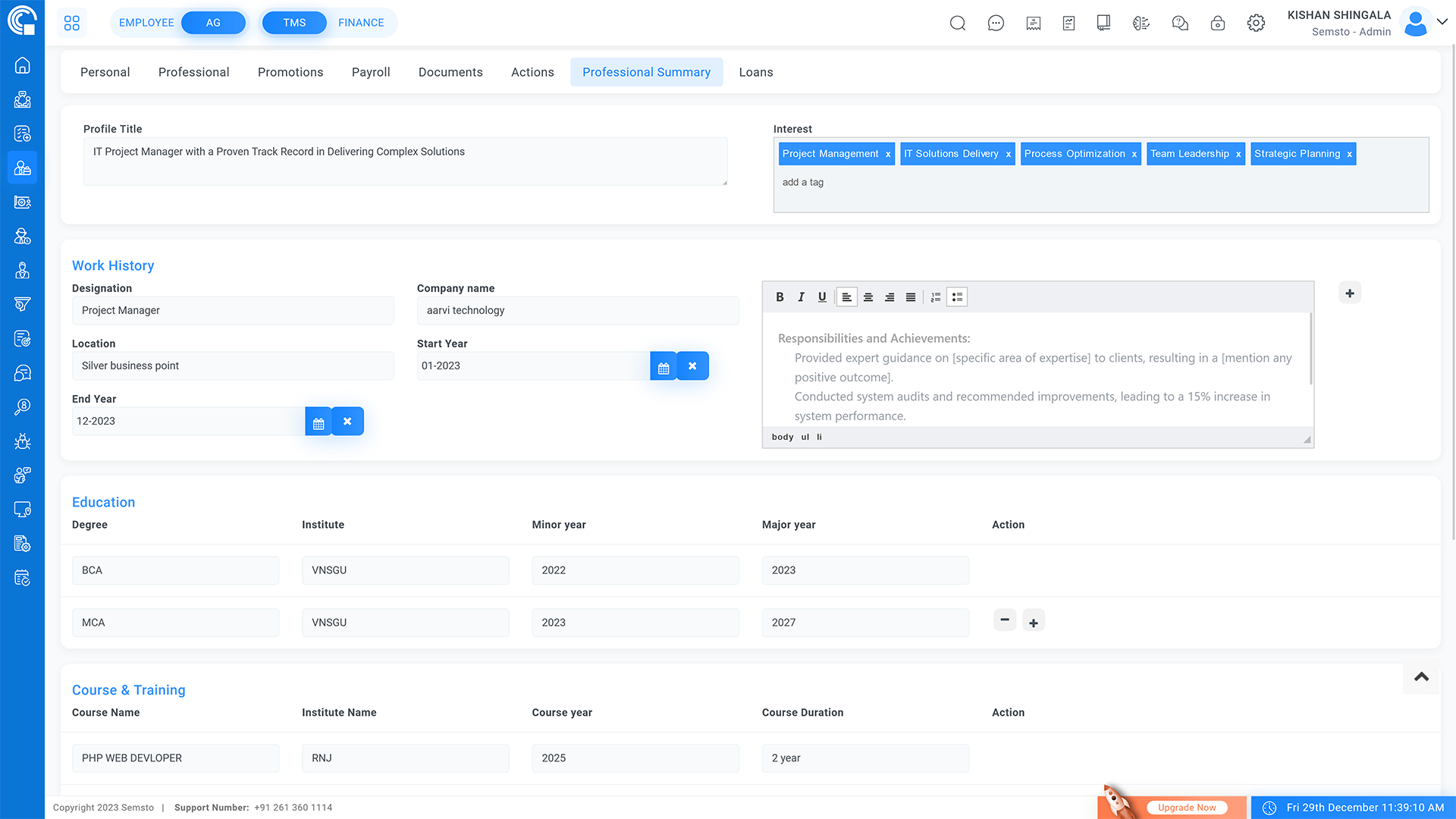
Manage Exit Interview
Upon an employee's exit, perform an exit interview and collect its conclusions in order to take data-driven decisions.
Conduct Exit Interviews:
Schedule and perform an interview with departing employees.
Collect Conclusions:
Gather insights and feedback from these interviews.
Utilize for Data-Driven Decisions:
Analyze the collected data to inform future organizational decisions and improvements.
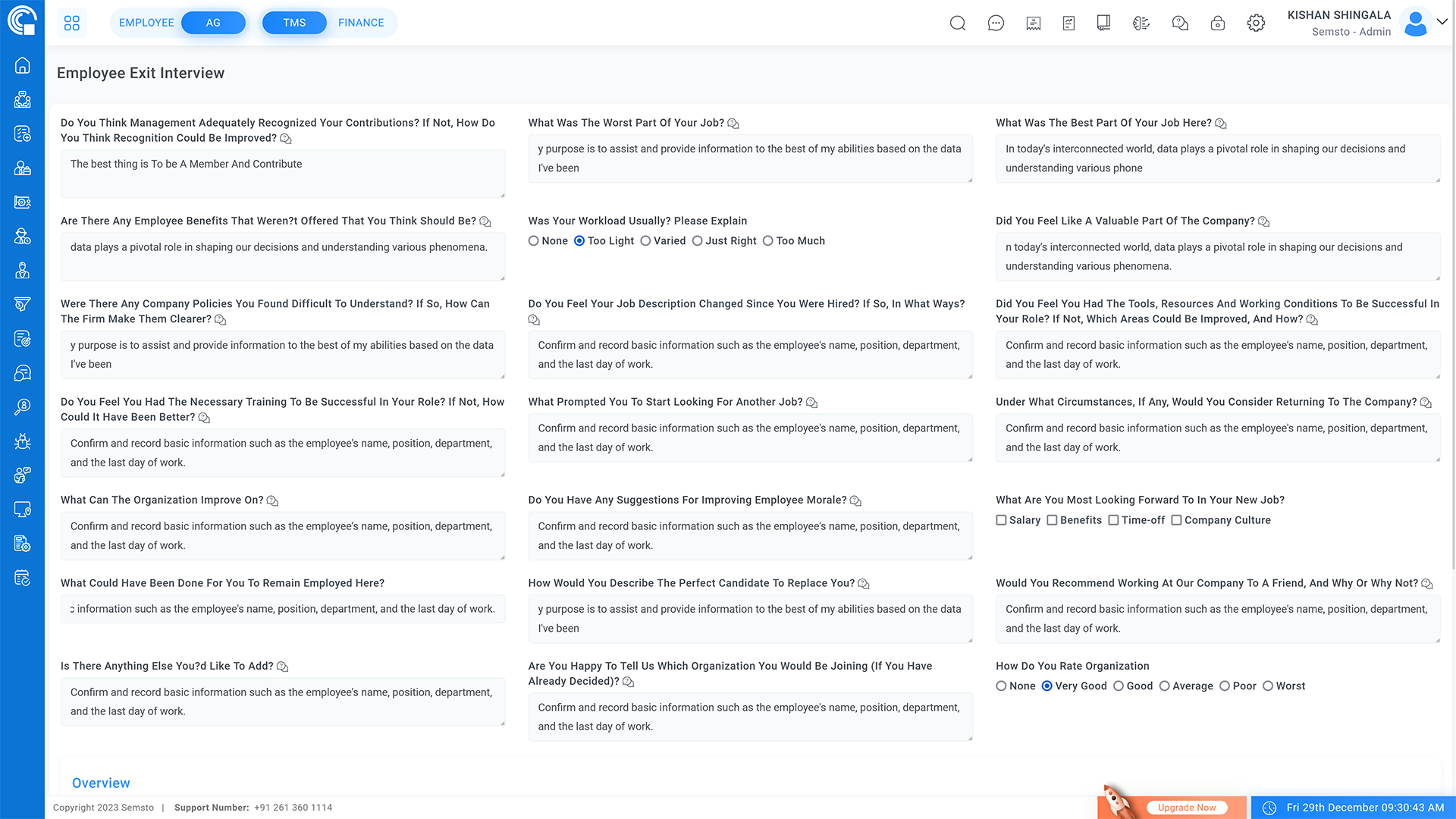
Employee Requests
Establish Employee Concern Platform:
Create a dedicated system for employees to voice concerns.
Facilitate Effective Resolution:
Use the platform to address and resolve issues efficiently.
Enhance Employee Peace of Mind:
Offer a reliable channel for employees to communicate, contributing to their well-being and job satisfaction.
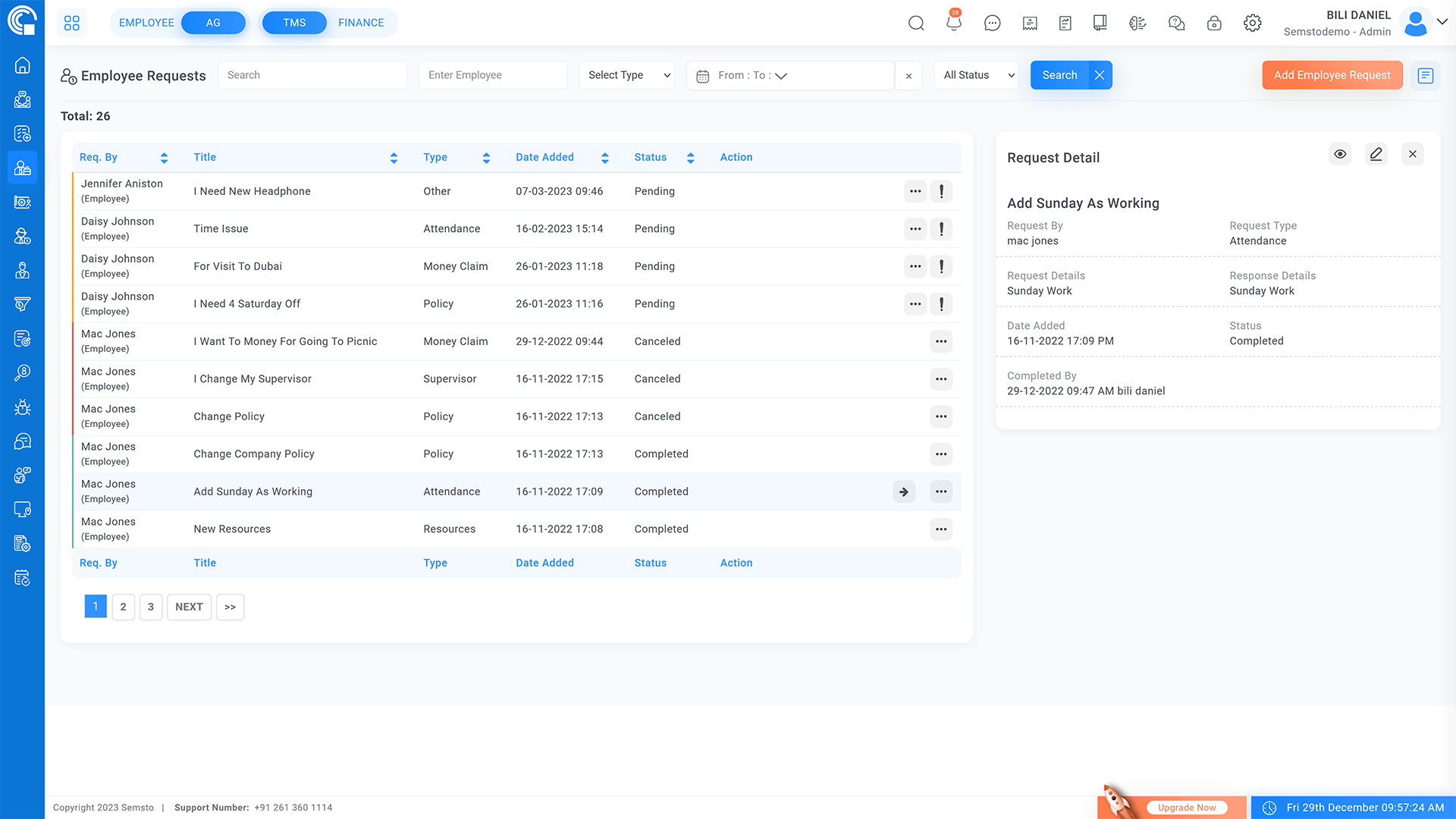
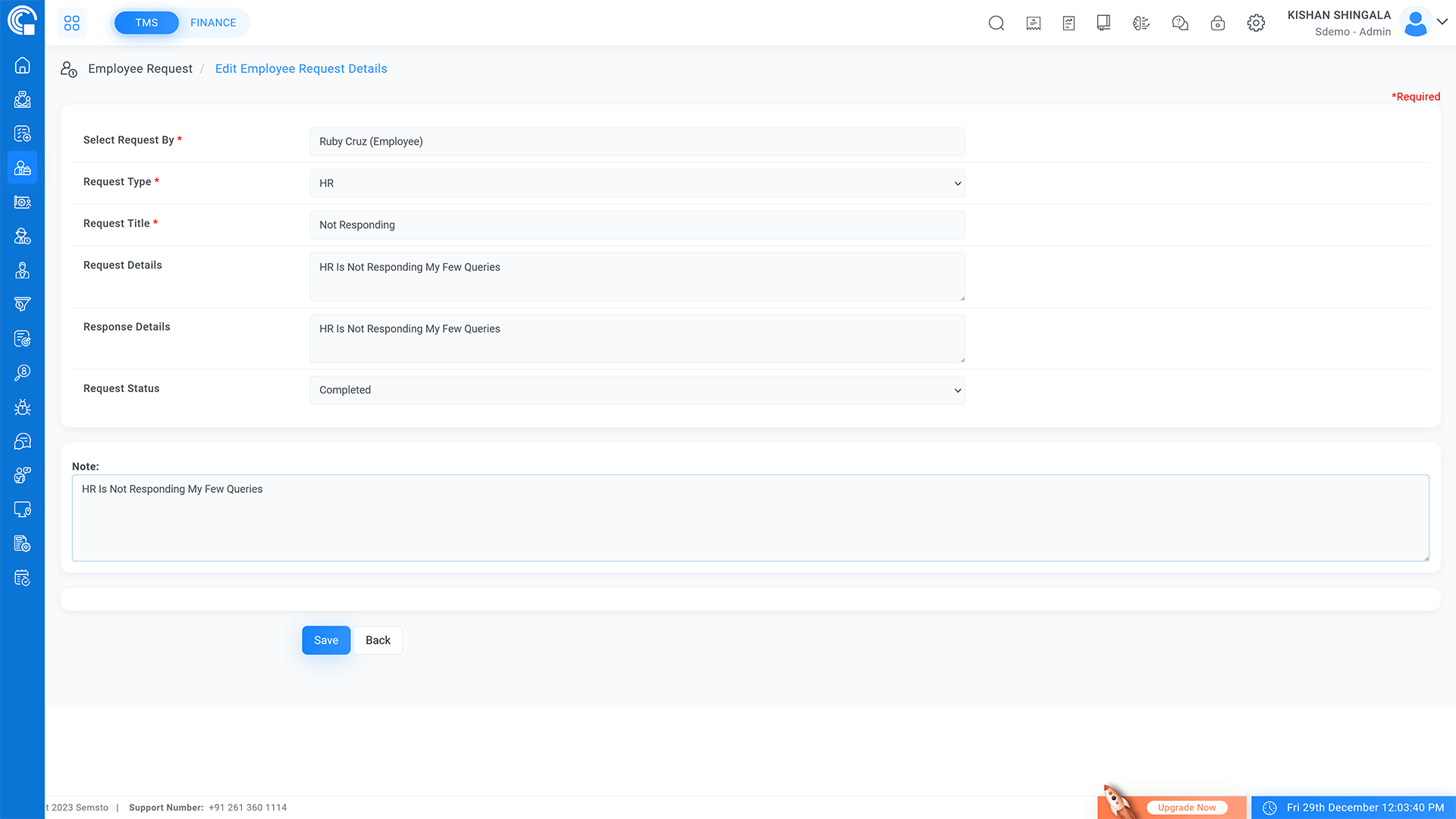
Transparent Cash Claim Process
Simplify Expense Submission:
Implement an easy-to-use system for employees to file expense claims.
Efficient Processing:
Ensure claims are managed promptly and effectively.
Transparent Operations:
Maintain clear communication and transparency throughout the expense claim process.
-
Keep track of payment made against expenses.

Employee Monitoring by Screen Capturing
Silent Activity Tracking:
Enables companies to silently monitor employee activities during work hours, ensuring a non-intrusive approach to oversight.
Visibility of Work Progress:
Provides clear and tangible insights into the tasks employees are working on, facilitating transparency in work progress.
Enhanced Work Management:
Assists in managing and evaluating the efficiency of teams, optimizing workflows and identifying areas for improvement.
Real-Time Monitoring:
Offers real-time tracking capabilities, allowing immediate understanding and response to work dynamics.
Data-Driven Performance Analysis:
Collects data that can be used for detailed performance analysis, helping in informed decision-making and employee evaluations.
Secure and Compliant:
Ensures that the screen capturing process is secure and compliant with privacy and data protection regulations, respecting employee confidentiality.
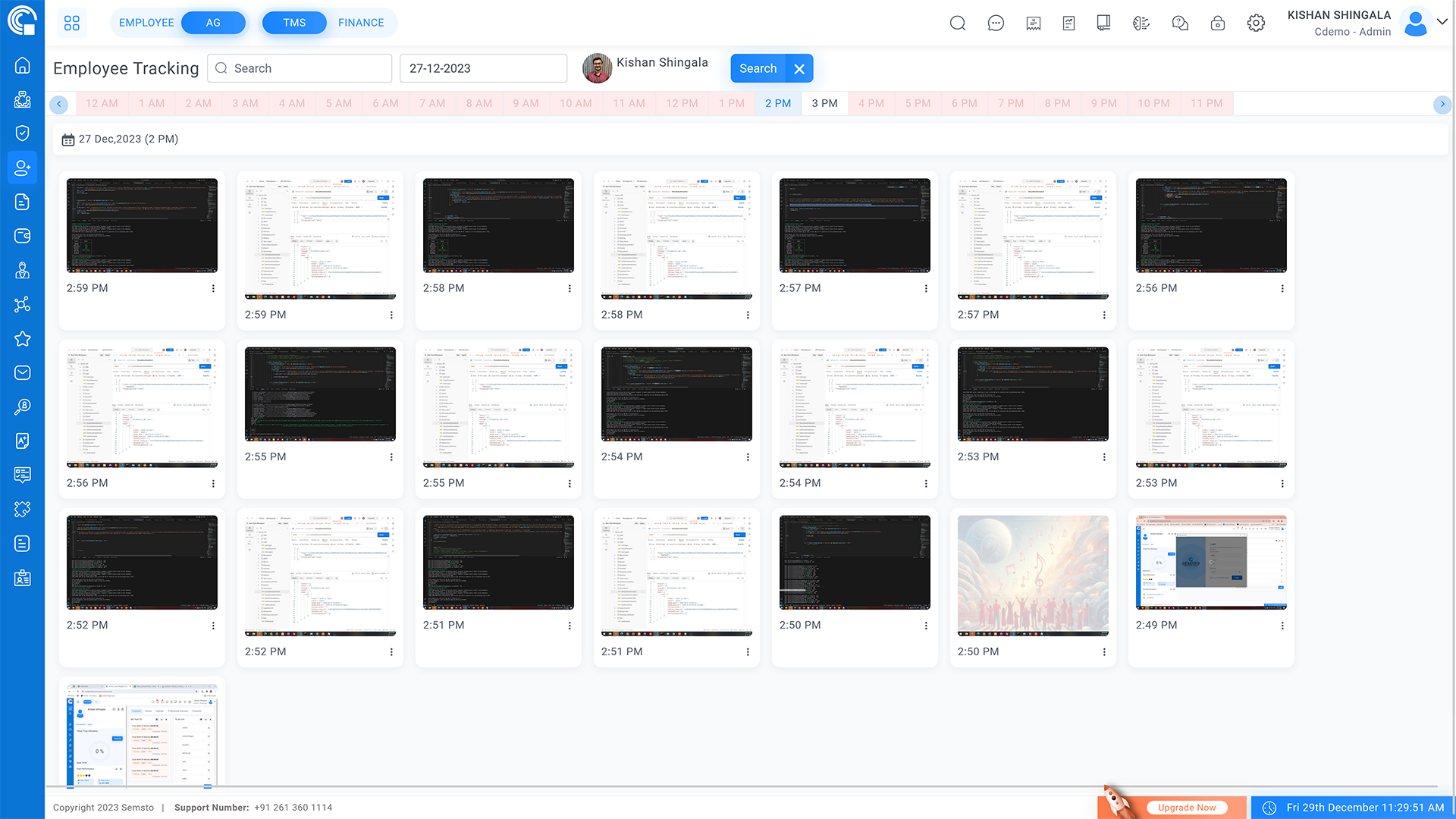
Evaluate Employee Performance
Customizable Evaluation Rules:
Allows admins to create specific evaluation criteria tailored to their team's needs.
Point and Weightage System:
Implements a structured point and weightage system for objective performance assessments.
Scheduling Flexibility:
Enables scheduling of evaluations between team members and leaders at convenient times.
Comprehensive Tracking:
Keeps track of all employee evaluations, ensuring a thorough performance review process.
Performance Measurement:
Facilitates accurate measurement of team member's performance based on set criteria.


Evaluate Telecaller Performance
Stay on Top of Every Call:
Never miss a client interaction again. Track every outgoing, incoming and rejected call to maintain complete visibility of your telecalling operations.
Maximize Productivity:
Monitor the exact time your telecallers spend on each call, helping you identify high-value conversations and streamline time management.
Boost Team Performance:
Get actionable insights into individual telecaller activity, empowering managers to recognize top performers and provide targeted coaching where needed.
Drive Smarter Business Outcomes:
Transform raw call data into meaningful metrics. Make informed decisions to improve customer engagement, optimize resources and increase conversions.
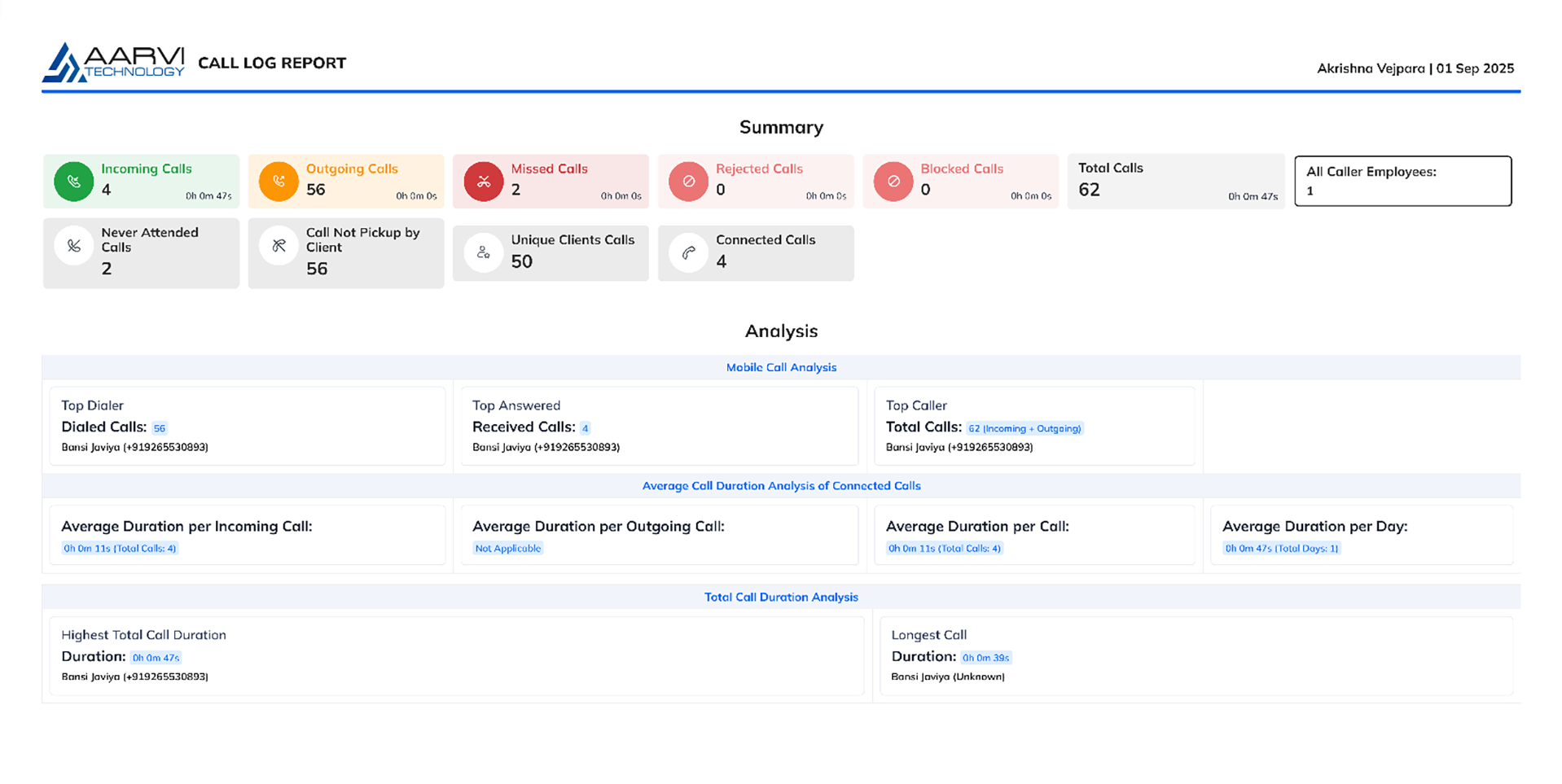
Pain Points
Time-Intensive Employee Information Management
The process of maintaining comprehensive records of all employee information is extremely time-consuming and resource-intensive.
Promotion Tracking and Reminders
There's a need for a more efficient system to keep track of employee promotions and set reminders for review periods.
Physical Document Management
Managing physical documents for employees is cumbersome and prone to disorganization.
Inability to Track Specific Employee Operations
Currently, there's a lack of a streamlined process to monitor and record specific operational tasks assigned to each employee.
Inadequate Exit Interview Documentation
The organization lacks a systematic approach to storing and analyzing data from exit interviews.
Employee Dispute Resolution Challenges
There's a need for a more effective mechanism to manage and resolve employee disputes.
Reduced Trust & Increased Miscommunication
Without visibility, managers and employees may face trust issues. With transparent tracking and verifiable activity records, your module builds accountability and reduces unnecessary conflicts.
Difficulty Measuring Telecaller Performance
Performance reviews often rely on guesswork or self-reporting. The module provides accurate, data-backed insights to evaluate individual telecallers.
Lack of Transparency in Cash Claim Process
The current process for handling cash claims lacks transparency, leading to potential misunderstandings and inefficiencies.
Lack of Transparent and Efficient Work Monitoring
Challenge of transparently and efficiently monitoring employee productivity.
Why Employee Management?
Employee management is important for organizations as it helps to ensure that their workforce is productive, motivated and engaged. The benefits of employee management include:
Improved Productivity: By effectively managing employees, organizations can increase productivity by reducing absenteeism, minimizing errors and increasing motivation.
Better Employee Engagement: Employee management helps to create a positive work environment and promote employee engagement, which can lead to increased job satisfaction, reduced turnover and improved performance.
Enhanced Recruitment and Retention: Effective employee management can help organizations to attract and retain top talent, which is essential for long-term success.
Better Compliance: Employee management can help organizations to stay compliant with labor laws, regulations and best practices, which can help to reduce legal risk and improve overall governance.
Better Decision-Making: By having access to accurate and up-to-date employee data, organizations can make better decisions about staffing, performance management and other critical HR functions.
In summary, employee management is essential for organizations as it helps to ensure that their workforce is productive, motivated and engaged.
Benefits of Employee Management Tool
Using an employee management tool can bring a range of benefits to an organization, including:
Increased Efficiency: Automating many HR processes such as time tracking, attendance management and performance evaluations can save time and increase efficiency.
Improved Accuracy: By having all employee data in a centralized system, organizations can reduce the risk of errors and increase the accuracy of HR-related information.
Better Communication: Employee management tools often include communication features such as instant messaging, forums and news feeds that can help improve internal communication and collaboration.
Better Data Analysis: With access to real-time data, organizations can gain a deeper understanding of employee performance, engagement and satisfaction, which can help inform HR decisions.
Reduced Paper-Based Processes: By using an employee management tool, organizations can reduce the amount of paper-based processes and the associated costs, such as printing and storage.
Increased Flexibility: Employee management tools can be accessed from anywhere, at any time, making it easier for employees to manage their HR-related tasks and for managers to keep track of employee performance.
Better Compliance: Employee management tools can help organizations stay compliant with labor laws, regulations and best practices, which can help to reduce legal risk and improve overall governance.
In summary, using an employee management tool can bring many benefits to an organization, including increased efficiency, improved accuracy, better communication, better data analysis, reduced paper-based processes, increased flexibility and improved compliance.
Employee Dispute Management by tool
Employee dispute management software is a type of HR technology that helps organizations manage and resolve disputes between employees. Some of the benefits of using such software include:
Improved Resolution Times: Employee dispute management software can streamline the dispute resolution process and help resolve disputes more quickly and effectively.
Increased Transparency: By having a centralized repository for disputes, organizations can increase transparency and improve the accountability of all parties involved in the resolution process.
Better Data Analysis: Employee dispute management software can provide organizations with real-time data and analytics on the types of disputes that are being raised and the resolutions that are being reached, which can inform HR strategies and decisions.
Improved Employee Engagement: By addressing disputes effectively and fairly, organizations can improve employee engagement, morale and satisfaction.
Better Compliance: Employee dispute management software can help organizations comply with labor laws, regulations and best practices, which can reduce legal risk and improve overall governance.
Overall, employee dispute management software can bring many benefits to an organization, including improved resolution times, increased transparency, better data analysis, improved employee engagement and better compliance.
How Semsto Help in Employee Management
Semsto can help to manage employee operations in several ways, including:
Time and Attendance Management: Semsto can help to manage employee attendance, schedules and time off requests, providing real-time visibility into employee availability and helping to reduce administrative burden.
Performance Management: Semsto can help organizations to manage employee performance by tracking goals, providing feedback and facilitating performance appraisals, helping organizations to measure and improve employee performance.
Employee Engagement: Semsto can help organizations to engage employees by providing a platform for regular communication, feedback and recognition, which can improve morale and motivation.
Onboarding and Offboarding: Semsto can help organizations to streamline the employee onboarding and offboarding process, reducing administrative burden and improving employee experience.
Compliance Management: Semsto can help organizations to manage compliance with labor laws, regulations and best practices, reducing legal risk and improving overall governance.
Overall, Semsto can help organizations to manage various employee operations, improving efficiency, visibility and compliance and creating a more engaged workforce.


